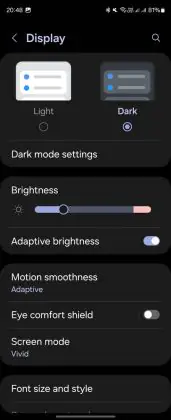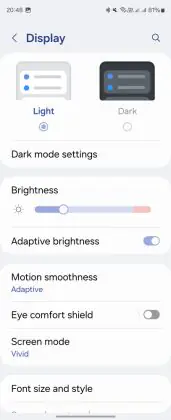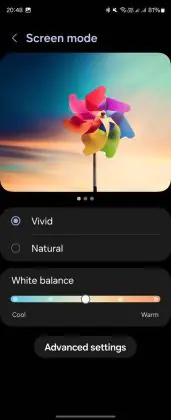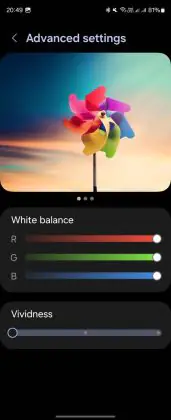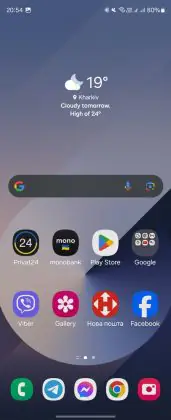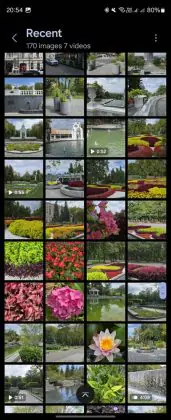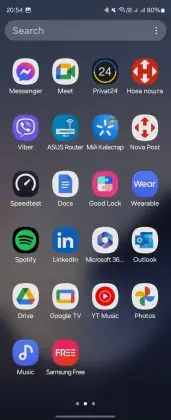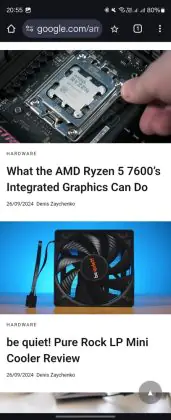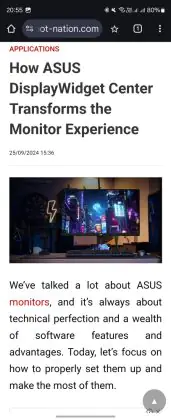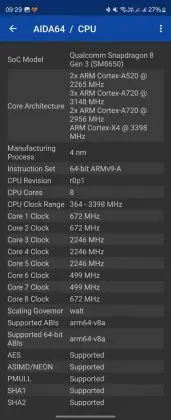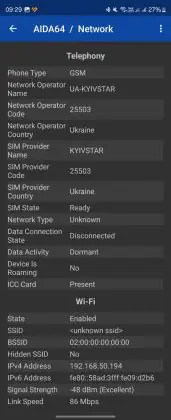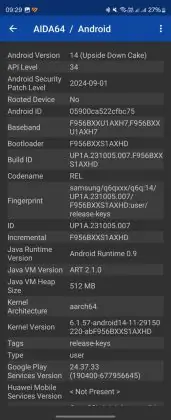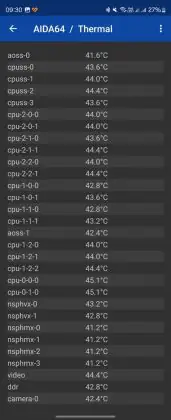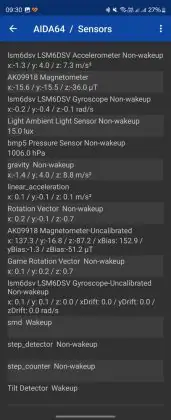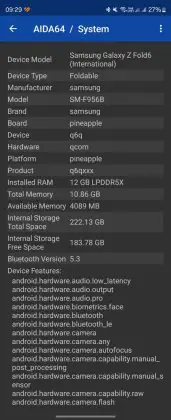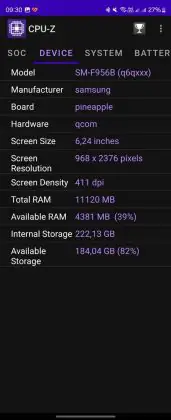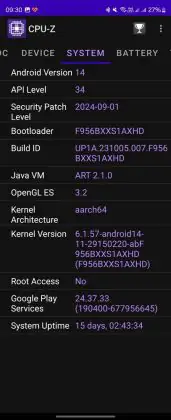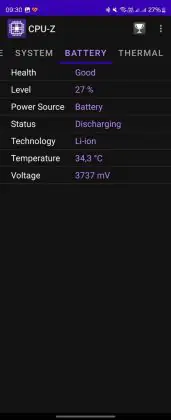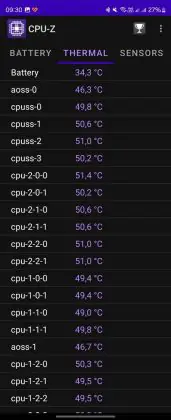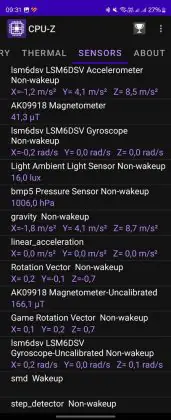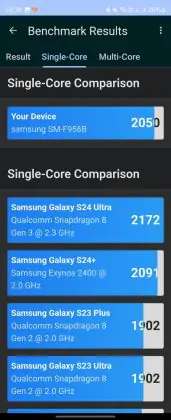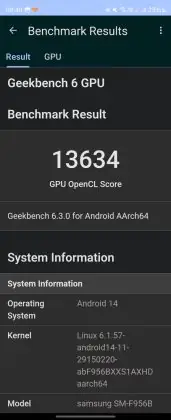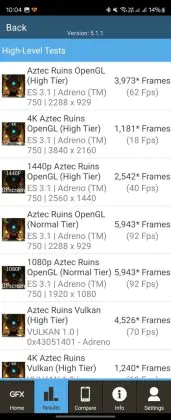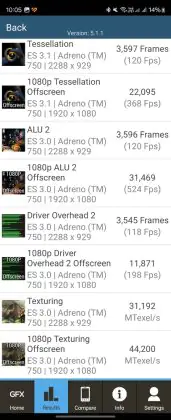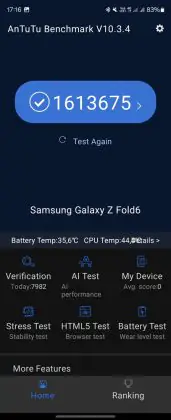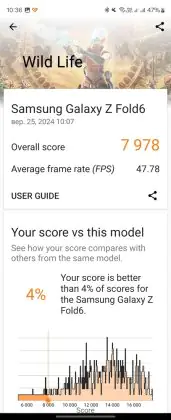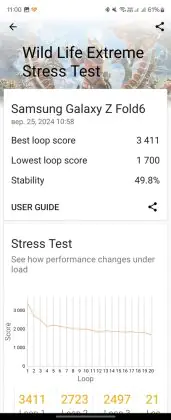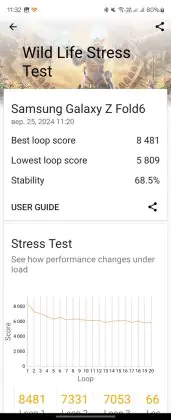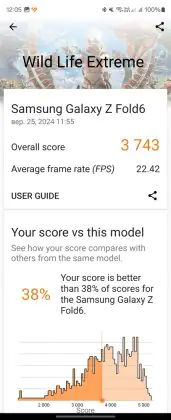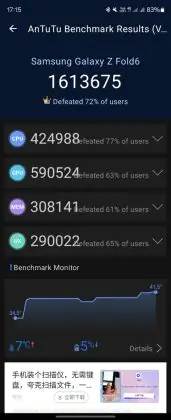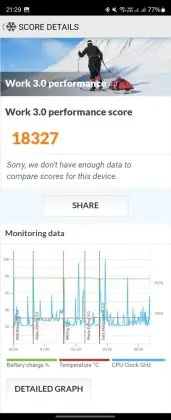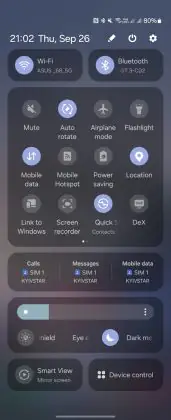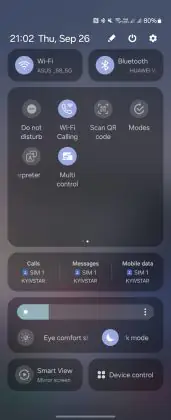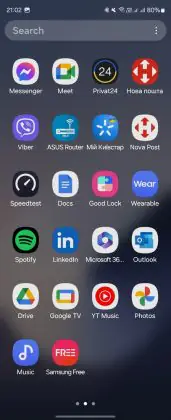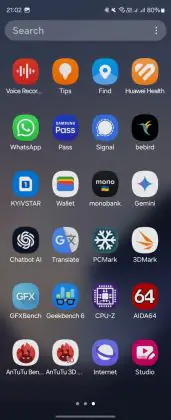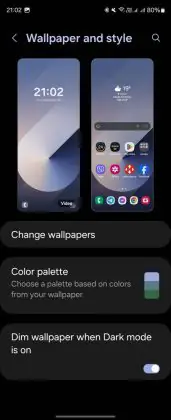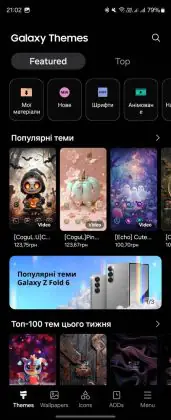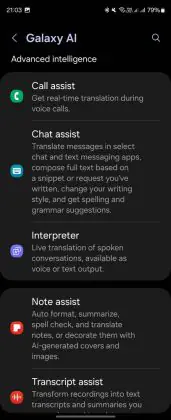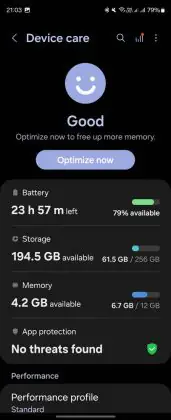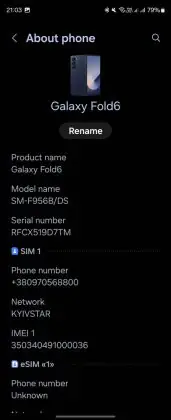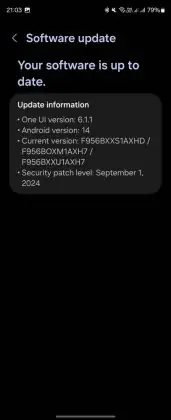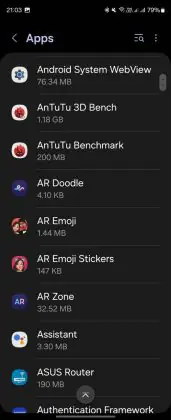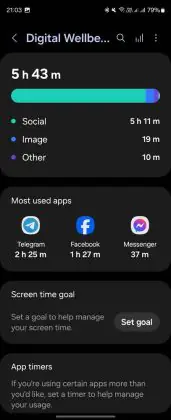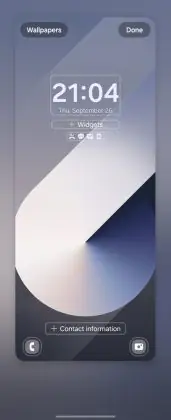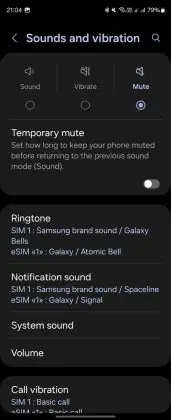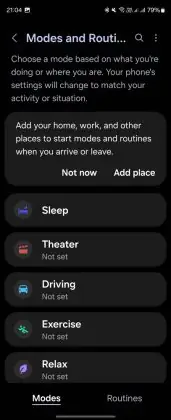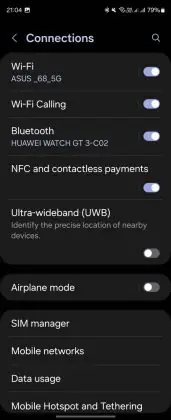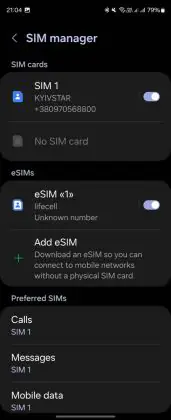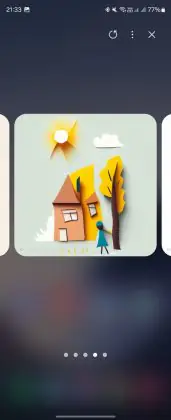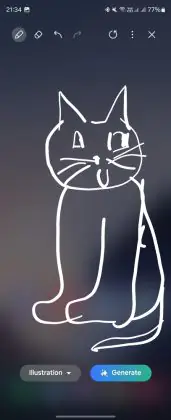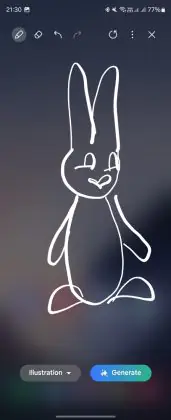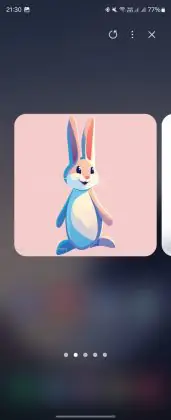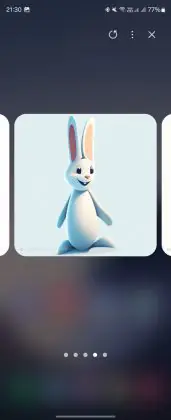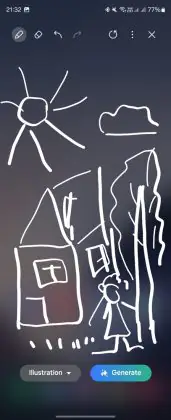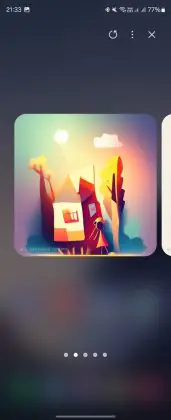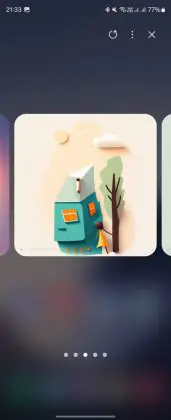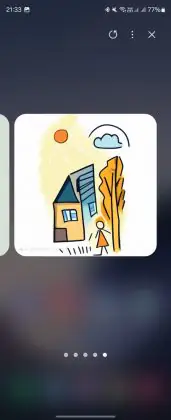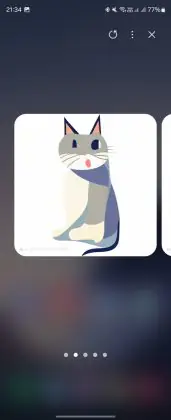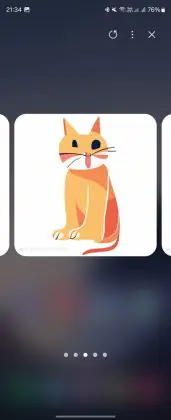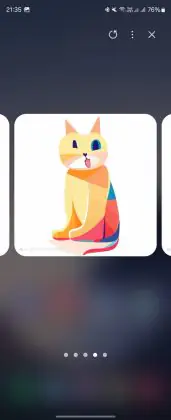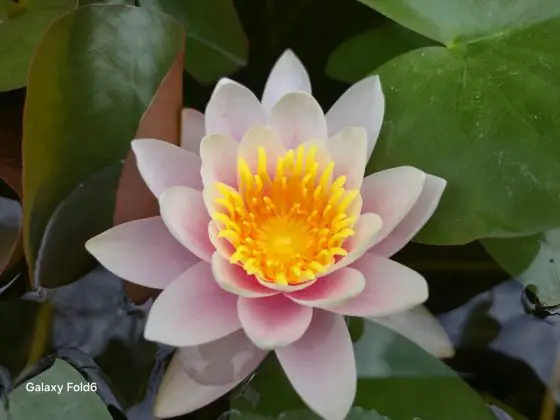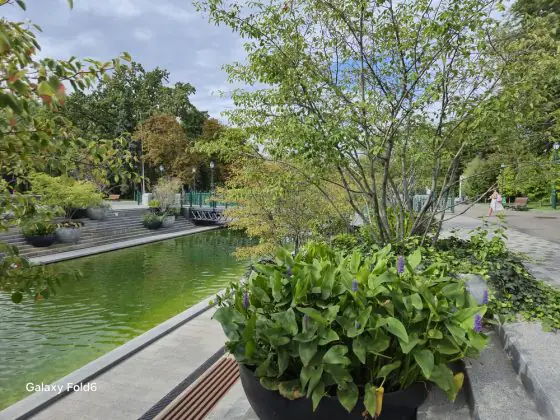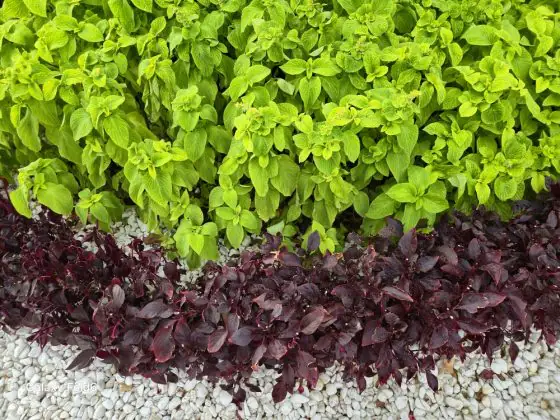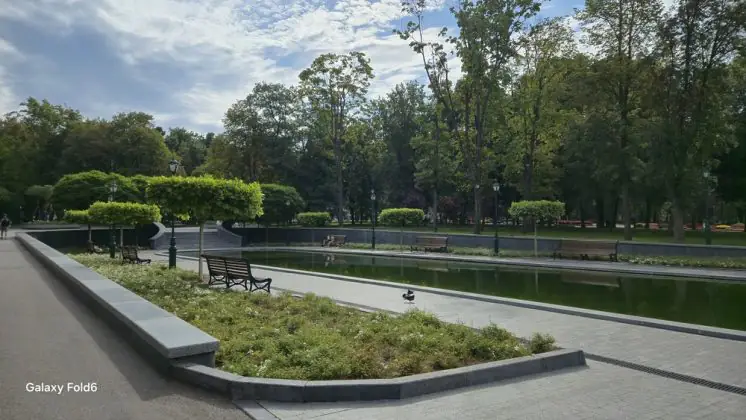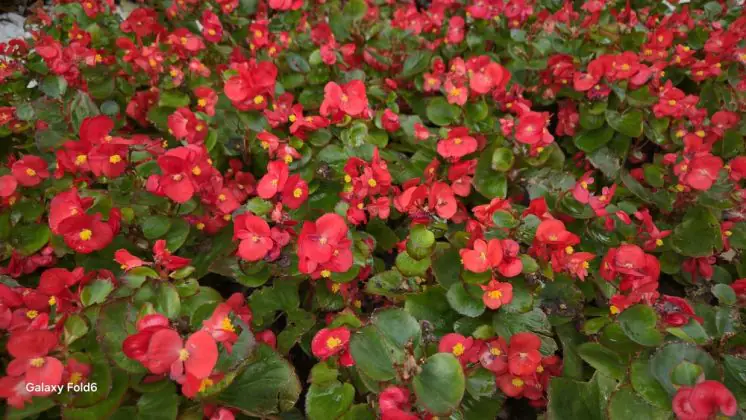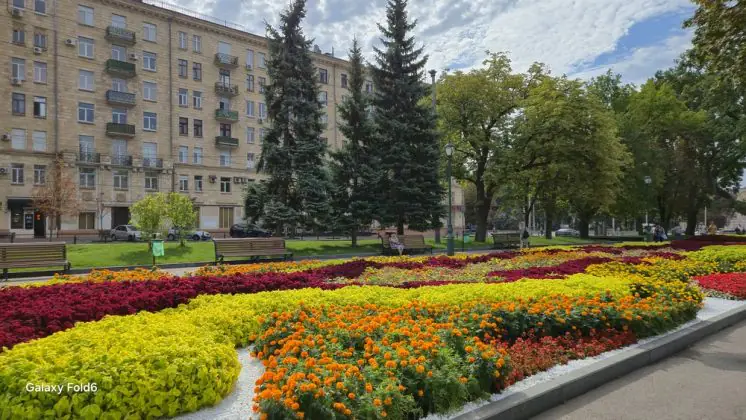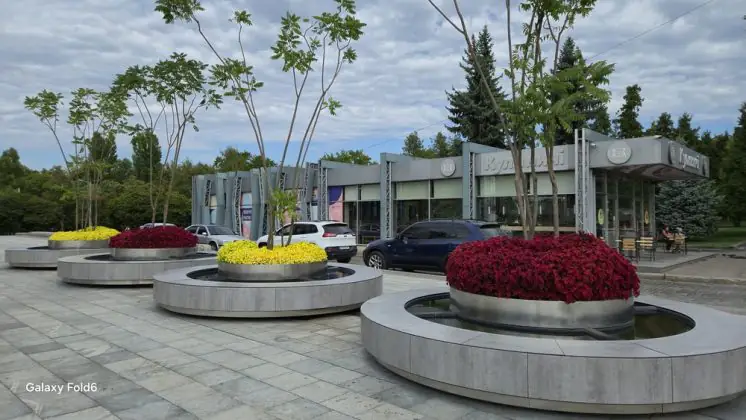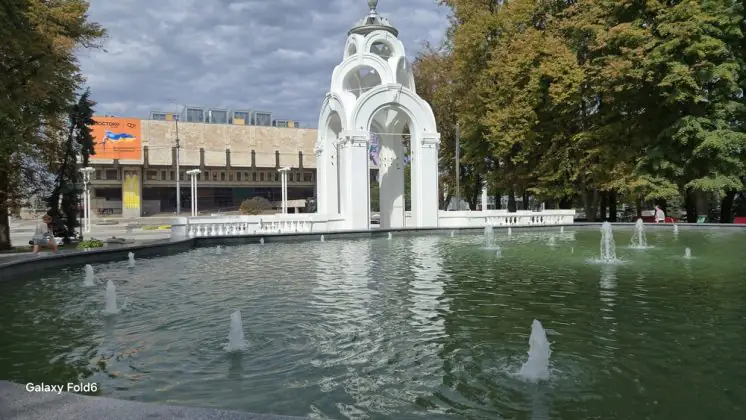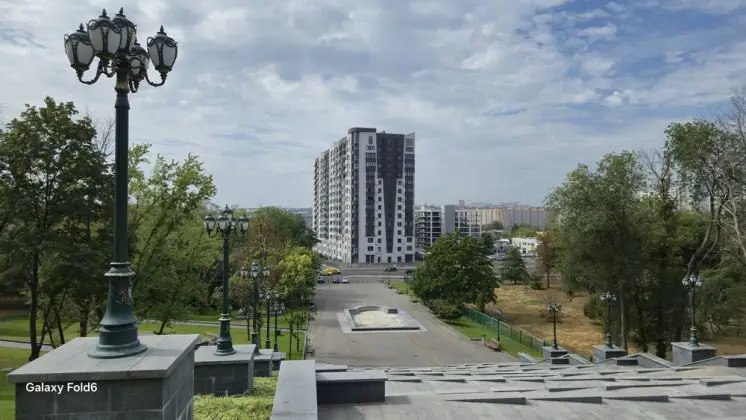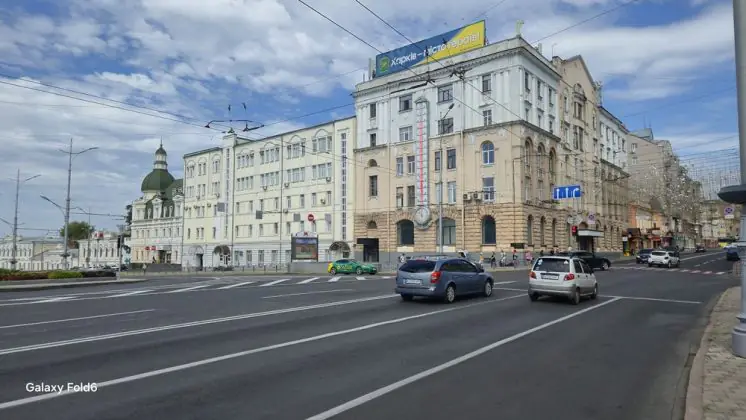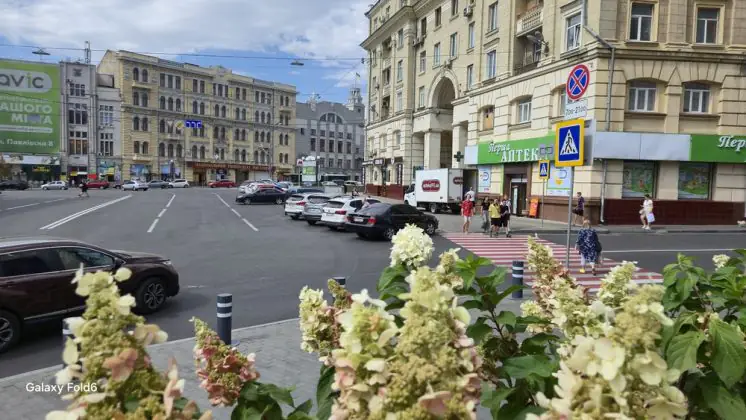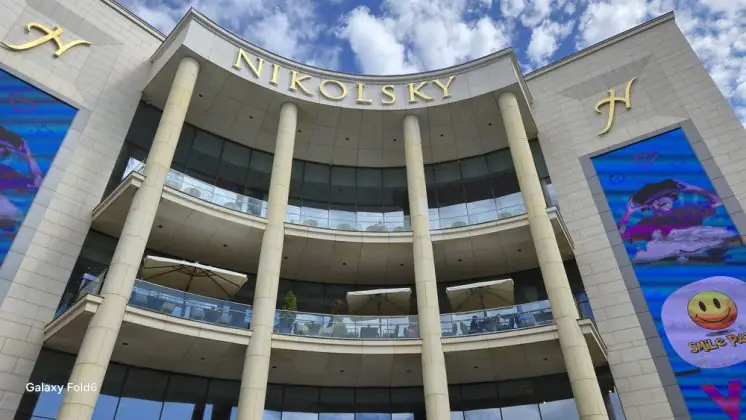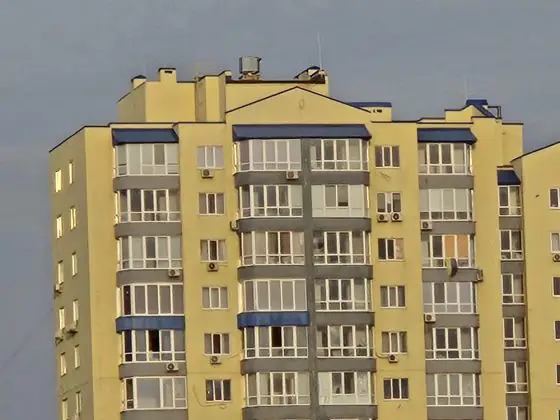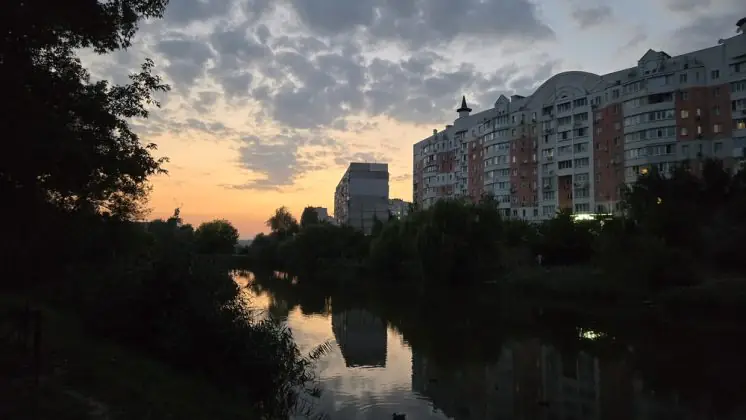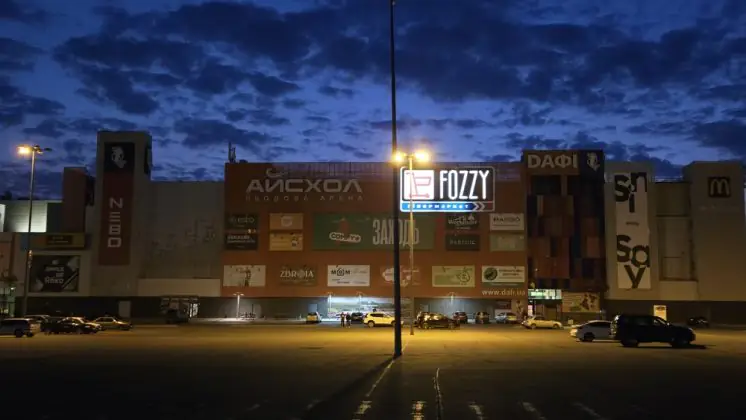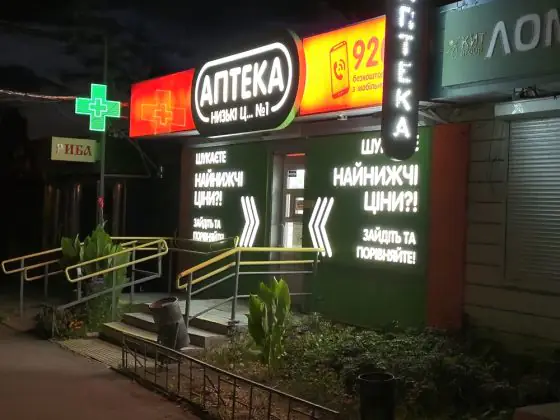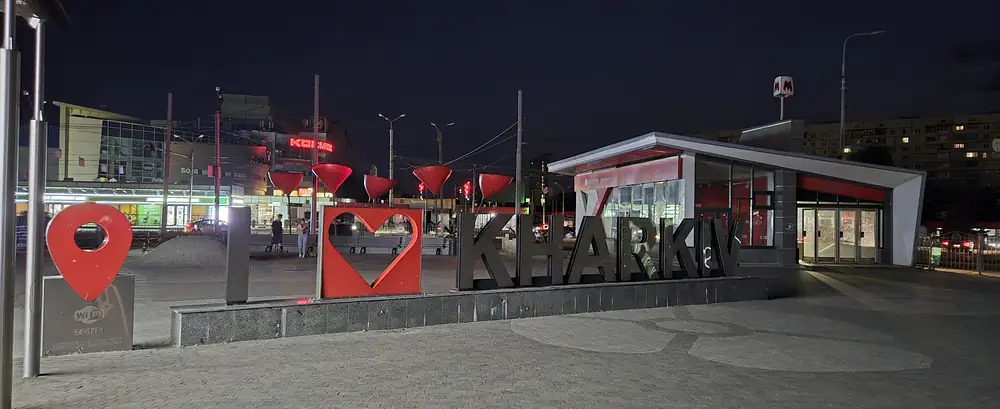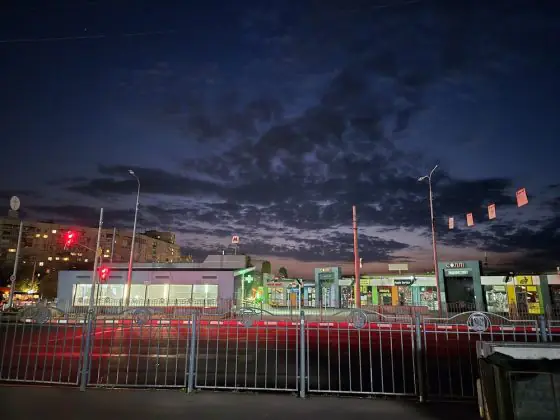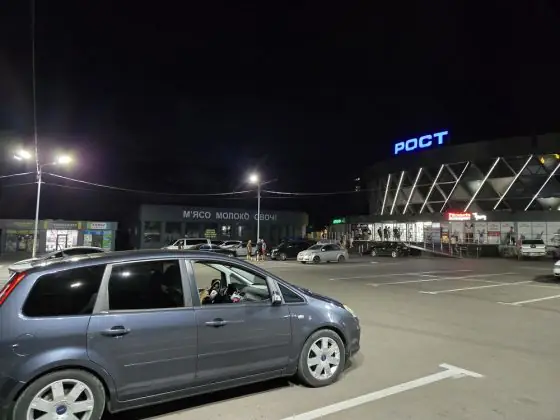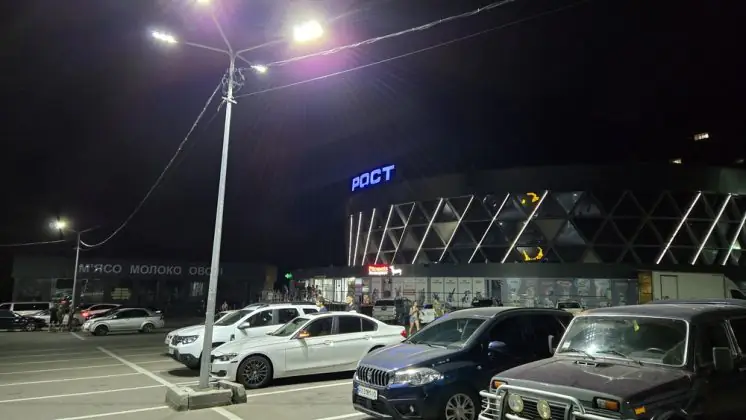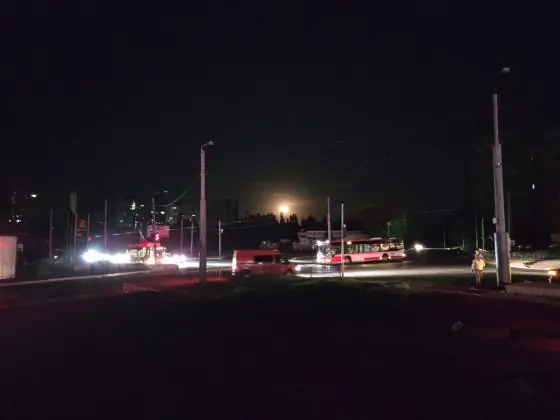© ROOT-NATION.com - Use of content is permitted with a backlink.
The Samsung Galaxy Fold6 is once again aiming to be the most impressive foldable smartphone on the market. But is having Samsung AI and an updated design enough to make that happen?
It may seem like foldable smartphones are no longer a technological novelty but rather everyday devices that should have long overcome their early issues. However, that’s far from the case.
Many regular users still have a certain level of mistrust toward foldable devices. There are several reasons for this: some are wary because they’re afraid of potential damage, others are put off by the high price, and some still don’t understand the purpose of such smartphones at all.
Yet, most manufacturers persistently stick to their vision, trying to convince us that the future lies in foldable devices. In this regard, the Korean company Samsung stands out, not only because they started this race but also because they continue to refine their devices.
It’s no secret that releasing new smartphones year after year often feels pointless. However, I don’t think any launch has highlighted this as much as the latest releases from the Korean giant. This year’s Galaxy Unpacked felt more like a subtle update to Samsung’s foldable devices, with an emphasis on the new Galaxy AI. In theory, Samsung no longer has anything to prove—most people already see top-tier smartphones as belonging to two worlds: Apple and Samsung. Still, it seemed that Samsung was feeling a bit too confident, as this year’s foldable phones are a clear example of stagnation. Meanwhile, competitors in this segment have made significant strides, and the Korean company should be more cautious.
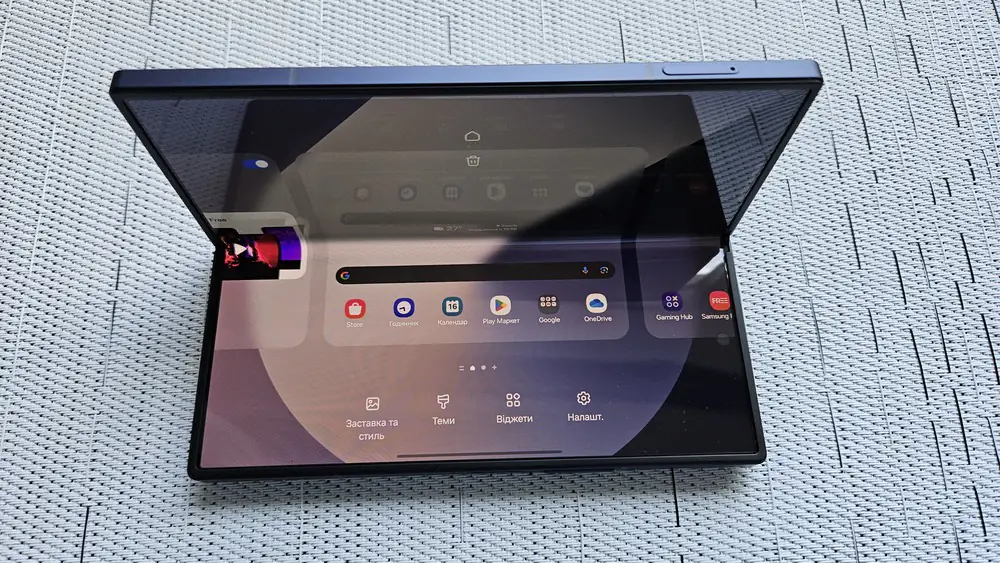
Year after year, Samsung makes some improvements, and the same can be said for the Samsung Galaxy Fold6. However, competitors aren’t standing still either, occasionally offering quite interesting solutions in the foldable smartphone segment. As a result, Samsung is becoming just one of many. The real question now is, who will have to learn from whom? I get the impression that Samsung will soon find itself playing catch-up, and that moment is approaching fast.
I’ve spent the last few weeks with the Samsung Galaxy Fold6, and while it’s undeniably a top-tier smartphone, I couldn’t shake the feeling that I’d seen it all before. Although, in reality, that’s not entirely the case. So, let’s break it down step by step.
Read also: Samsung Galaxy S24 Ultra Review: Strengths of AI and a Flawed Zoom
What is interesting about Samsung Galaxy Fold6
The Samsung Galaxy Fold6 5G remains an innovative smartphone, combining the power of a computer with the convenience of a tablet thanks to its 7.6-inch Foldable Dynamic LTPO AMOLED 2x display. The incredible image quality and smooth performance are ensured by the powerful Qualcomm Snapdragon 8 Gen 3 processor and 12 GB of RAM. Your Galaxy Fold6 can easily handle even the most demanding tasks. Using apps, including multitasking, is a real pleasure. The Flex Mode allows you to use it like a laptop when the screen is folded. One half can display a movie, while the other shows control buttons. The outer 6.3-inch screen also delivers the same high image quality and excellent contrast.
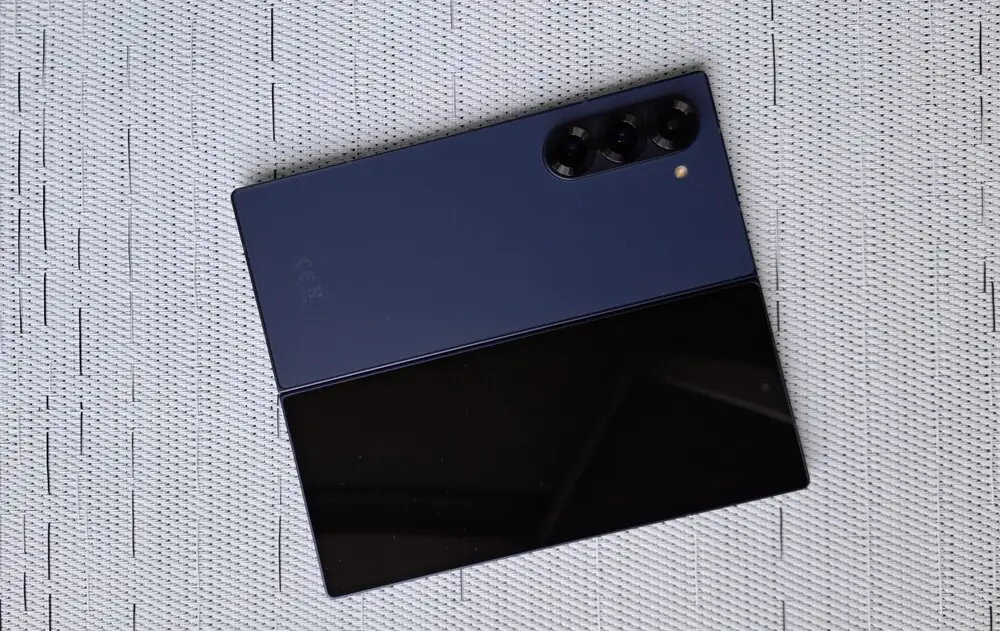
The Samsung Galaxy Fold6 features a high-resolution 50 MP main camera with optical image stabilization and a bright aperture, performing exceptionally well both during the day and at night. As a result, photos and videos are impressive in terms of image quality, with stunning sharpness and details that previously went unnoticed. Capture panoramic shots with the ultra-wide-angle lens and take amazing close-ups with the 3x telephoto zoom and 30x digital zoom. This new model will completely transform your multimedia experience thanks to its enhanced NPU, advanced specs, and ProVisual Engine.
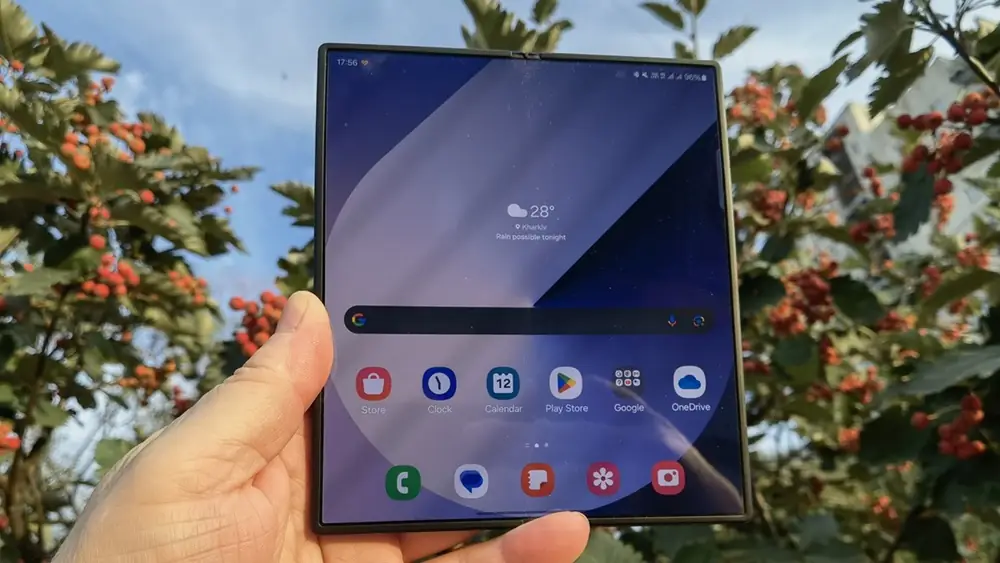
The Galaxy Fold6 5G delivers top-notch performance thanks to advanced AI solutions. Features like Circle to Search and Live Translate on dual screens make daily tasks much easier. AI also supports call recording and note-taking, which is particularly useful in a business context. The second-generation Snapdragon 8, integrated with artificial intelligence, offers significantly better performance and faster app processing. The Samsung Galaxy Z Fold 6 5G provides an unparalleled gaming experience, with a screen that’s 1.5 times brighter than the previous model and Vision Booster technology, which enhances color and contrast. Modern components like the second-generation Snapdragon 8 improve gaming performance, while ray tracing ensures more realistic graphics.
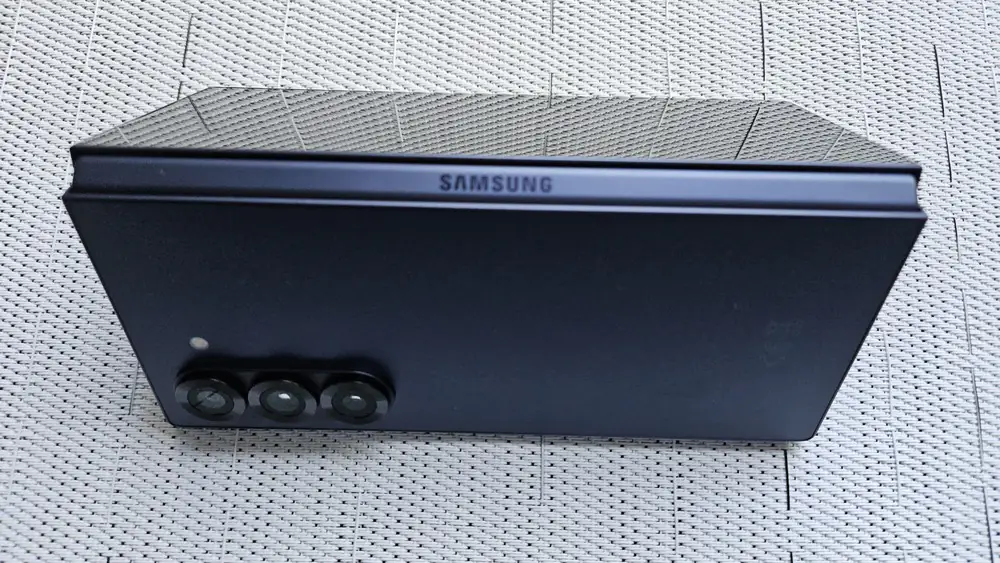
Now, let’s talk about the price. It’s important to understand that such a cutting-edge, innovative product can’t come cheap. The Samsung Galaxy Fold6 5G is available in Ukraine in three configurations and three color options to suit any taste: Navy Blue, Pink, and Silver Shadow. All of them come with 12 GB of RAM, with the only difference being storage options—256/512 GB or 1 TB. Naturally, the price varies accordingly. The most affordable option costs $1,943 / €1,742, while the 512 GB model will set you back $2,065 / €1,851, and the top-tier version will cost a hefty $2,308 / €2,069. Yes, the prices are astronomical, but we are dealing with a truly innovative product that not everyone will buy just yet. In my opinion, though, the Samsung foldable smartphone is worth every penny. This is my personal view, based on my experience using previous Galaxy Fold models, starting from the first one, as well as this specific sixth-generation foldable phone.
Let’s go step by step. First, let’s get acquainted with the technical specifications and features of the Samsung Galaxy Fold6 5G.
Samsung Galaxy Fold6 5G specifications
- Body: armored aluminum frame with increased resistance to drops and scratches, water resistance IPx8 (withstands immersion to a depth of 1.5 m for 30 minutes)
- Main screen: 7.6″ (full rectangle)/7.4″ (rounded corners); 2160×1856 (QXGA+), Dynamic AMOLED 2X, 120Hz, brightness up to 1750 nits, Dynamic AMOLED 2X, 16M colors
- Additional display: 6.3″, 2376×968 (HD+), up to 1750 nits, Dynamic AMOLED 2X, 16M colors, Corning Gorilla Glass Victus 2 protection, 23.1:9 ratio
- Processor: Qualcomm Snapdragon 8 gen 2, 4 nm, 8-core (1×Cortex-X4 at 3300 MHz, 3×Cortex-A720 at 3150 MHz, 2×Cortex-A720 at 2960 MHz and 2×Cortex-A520 at 2270 MHz)
- Graphics processor: Adreno 750
- Operating system: Android 14 with One UI 6.1.1
- Memory: 12GB LPDDR5X RAM, 256/512GB/1TB UFS 4.0 storage (no memory card slot)
- Available configurations: 12/256, 12/512, 12 GB/1 TB
- Rear cameras: 50 megapixels (f/1.8, Dual Pixel AF, OIS) + 12 megapixels ultra-wide-angle (f/2.2, 123°) + 10 megapixels telephoto lens (3x optical zoom, f/2.4, OIS)
- Front camera: 4MP + 10MP front (when folded)
- Battery: 4400 mAh, 25W wired charging (50% in 30 min) + 15W inductive charging (incl. 4.5W reverse)
- Connectivity: 5G, 4G LTE and LTE-A, eSIM, Wi-Fi 6e (802.11 a/b/g/n/ac/ax, 2.4 + 5 + 6 GHz bands), Wi-Fi 7 ready, Bluetooth 5.3 with SBC, AAC, aptX, LDAC and SSC codecs, NFC
- Optional: Samsung DeX (support for desktop mode), stereo speakers “Tuned by AKG”, DualSIM or one SIM + eSIM
- Sensors: fingerprint scanner (side), accelerometer, gyroscope, proximity, compass, barometer
- Connectors: USB Type-C 3.2 – 1 pc, nanoSIM card slot – 2 pcs
- Dimensions: unfolded – 153.5 × 132.6 × 5.6 mm, folded – 153.5 × 68.1 × 12.1 mm
- Weight: 239 g
- Colors: Navy Blue, Pink, Silver Shadow.
What’s in the package
The smartphone arrived for testing without the box, but it did include a USB-C cable and a SIM tray ejection tool. However, the charger, case, and stylus (essentially a case with a stylus) need to be purchased separately. A few thousand hryvnias here and there don’t make much of a difference considering the price of the Galaxy Fold6. The trend of minimizing included accessories continues.

Samsung Galaxy Fold6 design: evolution, but not revolution
Even this year, Samsung hasn’t managed to revolutionize the design and manufacturing of its flagship foldable smartphone. The existing concept has been polished to perfection, but we only have small differences compared to the previous generation.
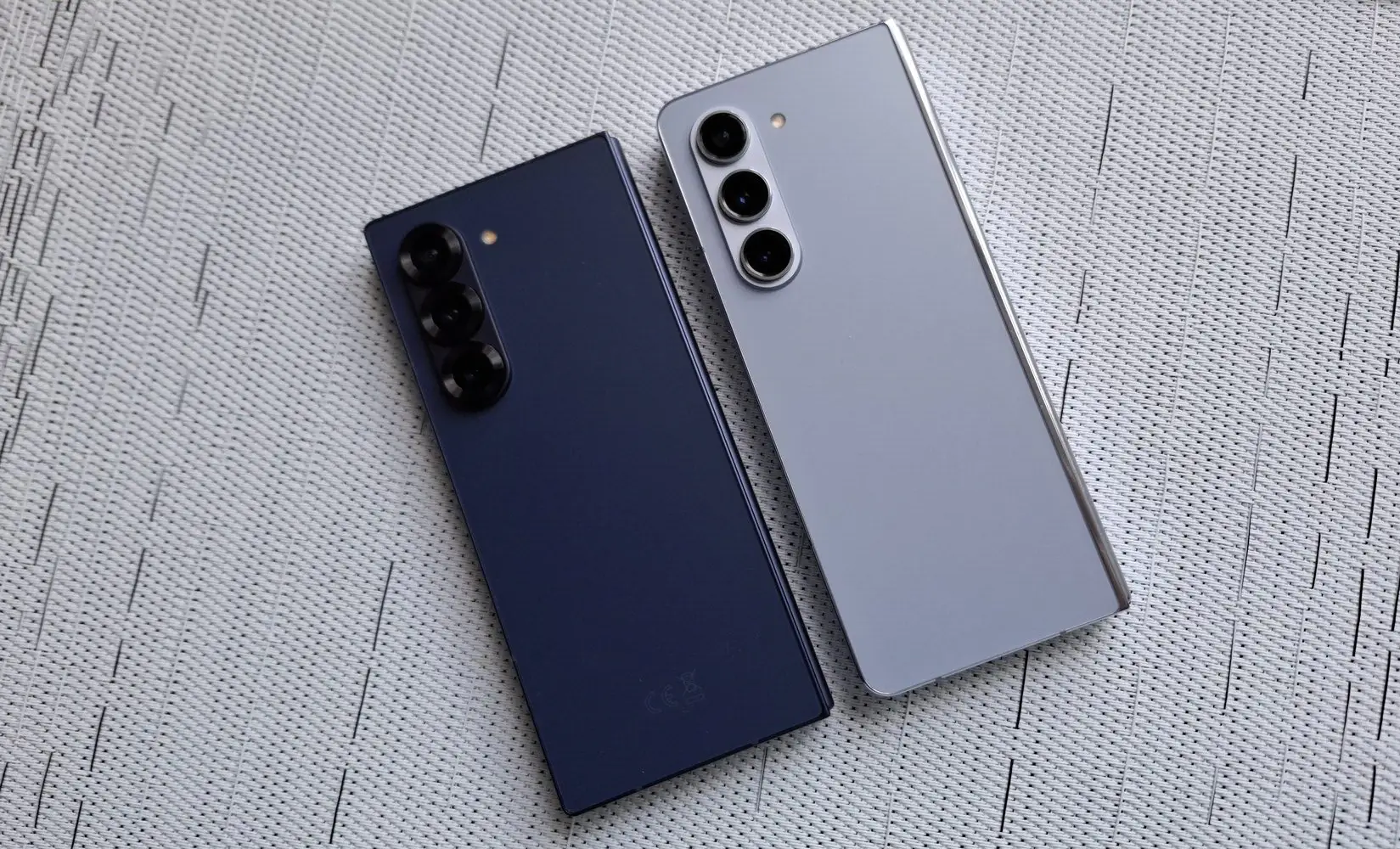
At first glance, the more angular design immediately stands out. The aluminum frames have lost their typical curves and are now almost straight, with sharper corners. The smartphone’s design resembles the Galaxy S24 Ultra, which surprised me a bit. However, this choice is quite interesting in the context of rumors that next year, the Ultra might move away from the sharper edges and return to smoother, more elegant design lines. Initially, I admit, I was concerned this might lead to discomfort while using the smartphone. Fortunately, this wasn’t a design flaw. The foldable phone still feels great in the hand, with no negative impact on usability, whether folded or unfolded.
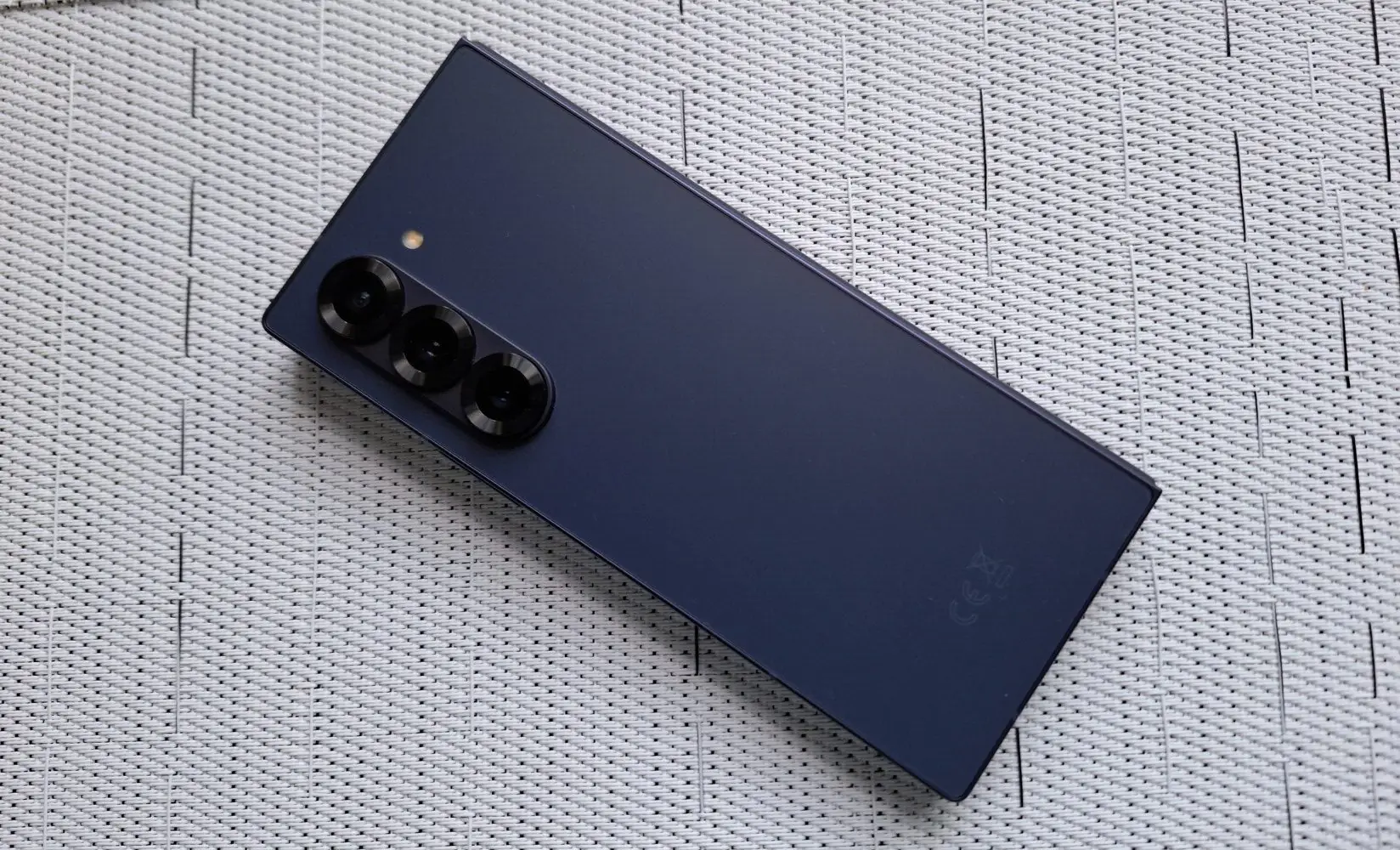
I have to admit, the sharper contours of the smartphone aren’t entirely to my liking, though I acknowledge that it looks quite elegant and technically appealing. However, don’t expect any drastic changes. The Samsung Galaxy Fold6 is still a large phone, with a shape reminiscent of a TV remote. Compared to a classic smartphone, it’s unusually thick, the triple camera lenses still protrude on the back, and after carrying it in your pocket for a while, you might start considering a return to the ’90s with belt-mounted phone holsters.
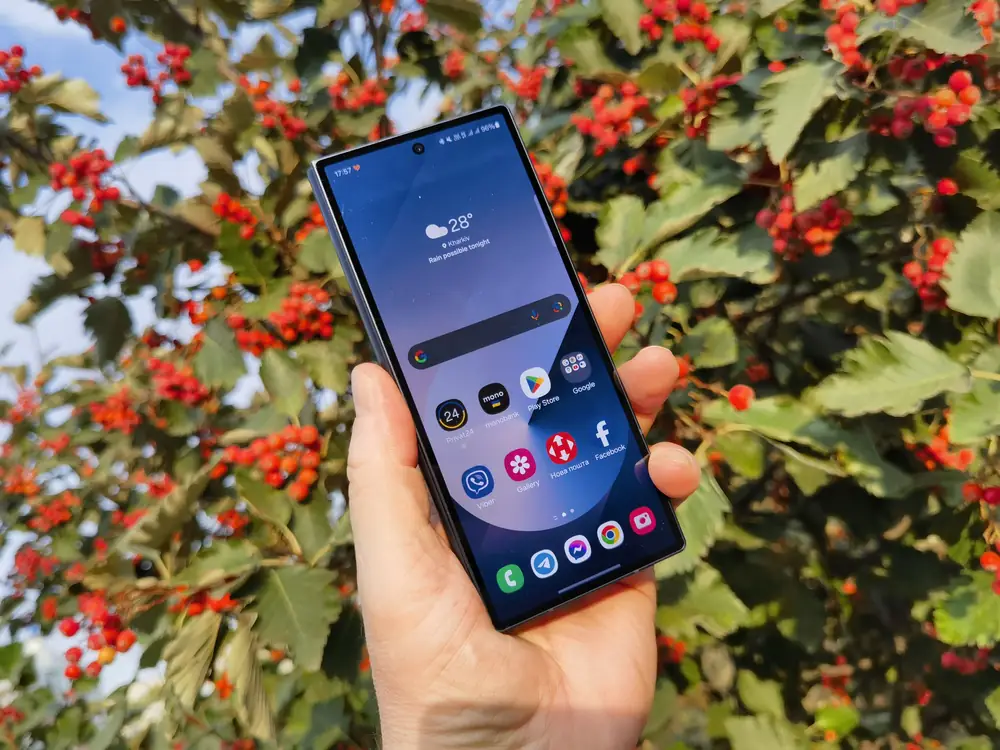
Anything else that changed? Well, theoretically, there wasn’t much room for improvement. The biggest flaw in the Fold series was fixed last year when Samsung finally got rid of the visible gap when the phone was folded. However, there is a small difference in the camera design this time. All three lenses now have slightly larger frames that blend seamlessly with the camera island. These are cosmetic changes, especially when comparing the Galaxy Fold5 to the Fold6. Although, this year’s model does look a bit more premium.
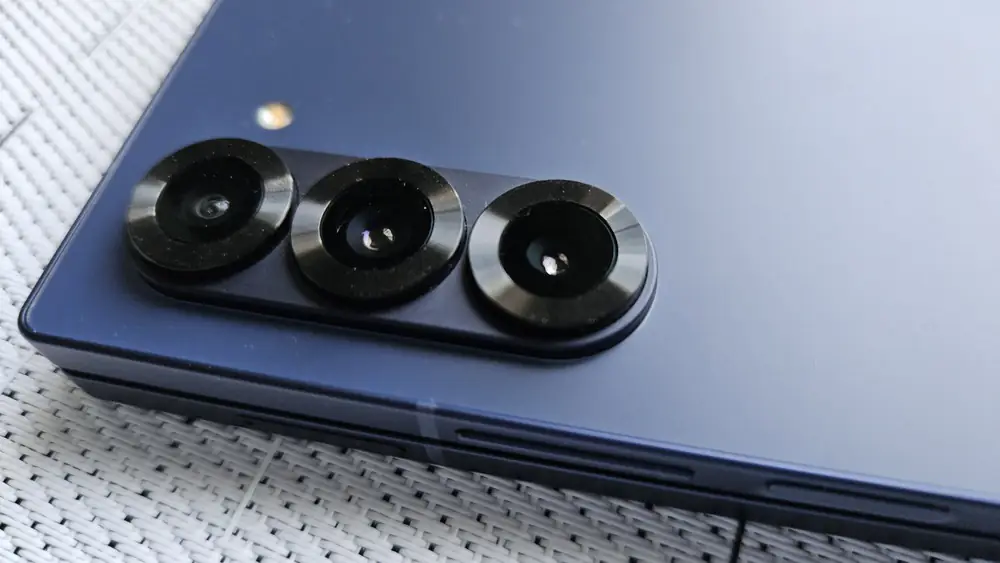
It’s worth noting that Samsung has decided to change the dimensions of the new Galaxy Fold6. Now, when folded, the thickness of the smartphone has been reduced by 1.2 mm to 12.2 mm. Additionally, when unfolded, the Galaxy Fold6 measures just 5.6 mm thick, which is a decrease of half a millimeter compared to last year’s model. While these changes may seem minor and are hard to notice at first glance, the smartphone does feel slimmer compared to its predecessor.

This reduction in thickness has been made possible by introducing new proportions to the device. The Galaxy Fold6 is now one millimeter wider when folded and 2.7 mm wider when unfolded. These changes have allowed for a larger 6.3-inch screen on the front, which is a significant improvement.
Of course, the Samsung Galaxy Fold6 is not only slimmer but also lighter. The new model weighs 239 g, marking a notable weight reduction compared to its predecessor, which weighed 253 g. You can really feel the difference right away when transitioning from the fifth to the sixth model.
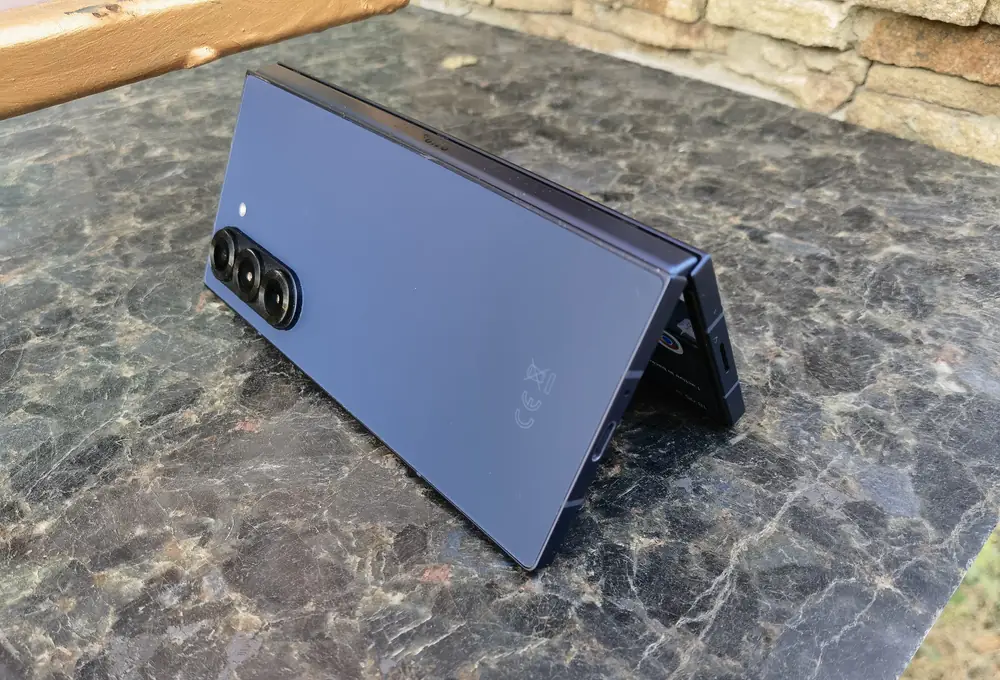
On the other hand, this is the classic foldable smartphone from Samsung that we’ve known for many years. This year’s models are available in silver, pink, and the dark blue variant that I tested. Samsung has also improved the protection from last year’s IPX8 to IP48. This means the new model now has full dust protection and is waterproof up to 1.5 meters for 30 minutes.
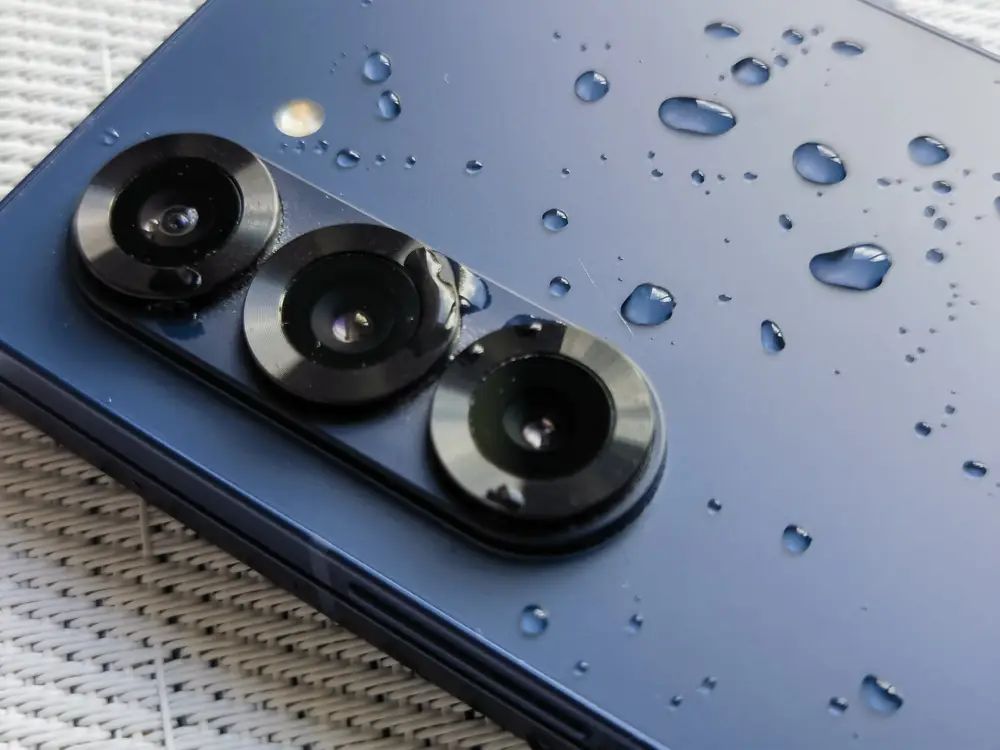
The crease on the display is slightly less noticeable, especially when swiping. Visually, it is still visible, particularly when it reflects surrounding light.
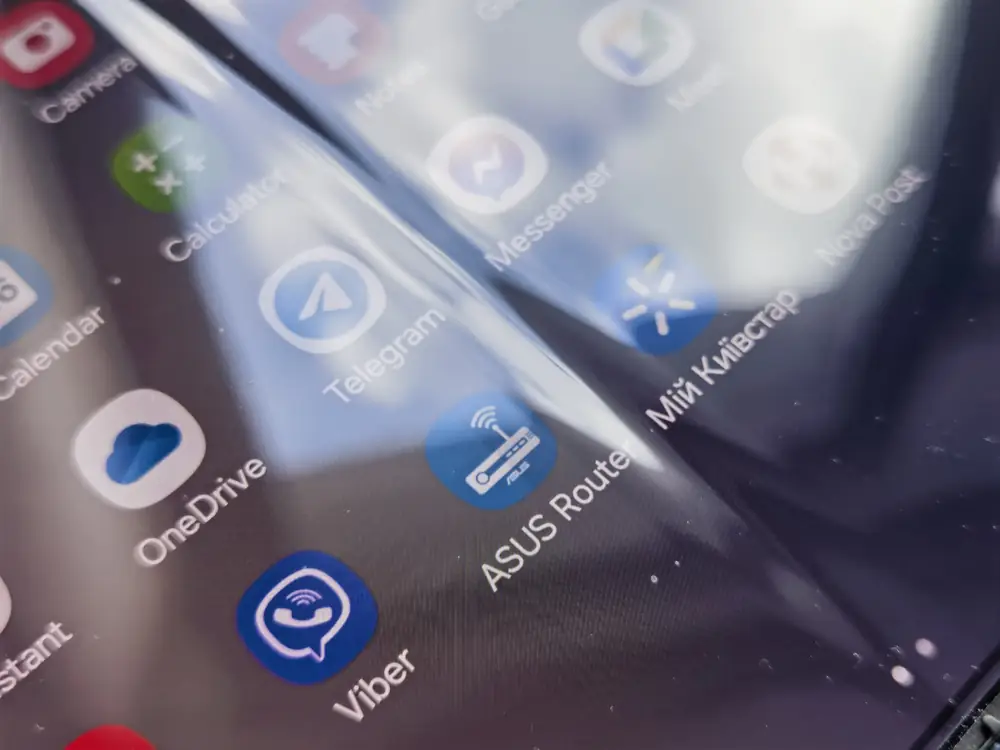
However, it is less noticeable to the touch, thanks to the innovative hinge that can withstand the entry of solid particles up to one millimeter in size. Additionally, the Korean giant boasts that it has upgraded the frame and hinges of the Galaxy Fold6, which are now 10 percent stronger than in the previous version.
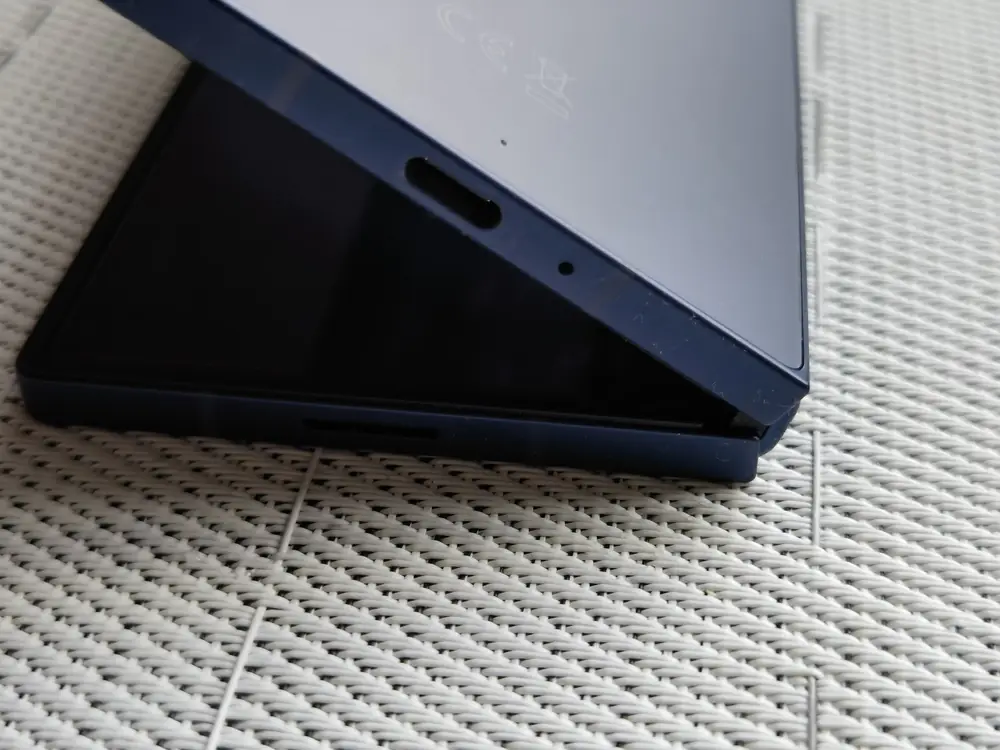
The front and rear displays are covered with Gorilla Glass Victus 2, the frame is made of aluminum, and the flexible display is protected by a plastic film. The Samsung Galaxy Fold6 also offers full stylus support.
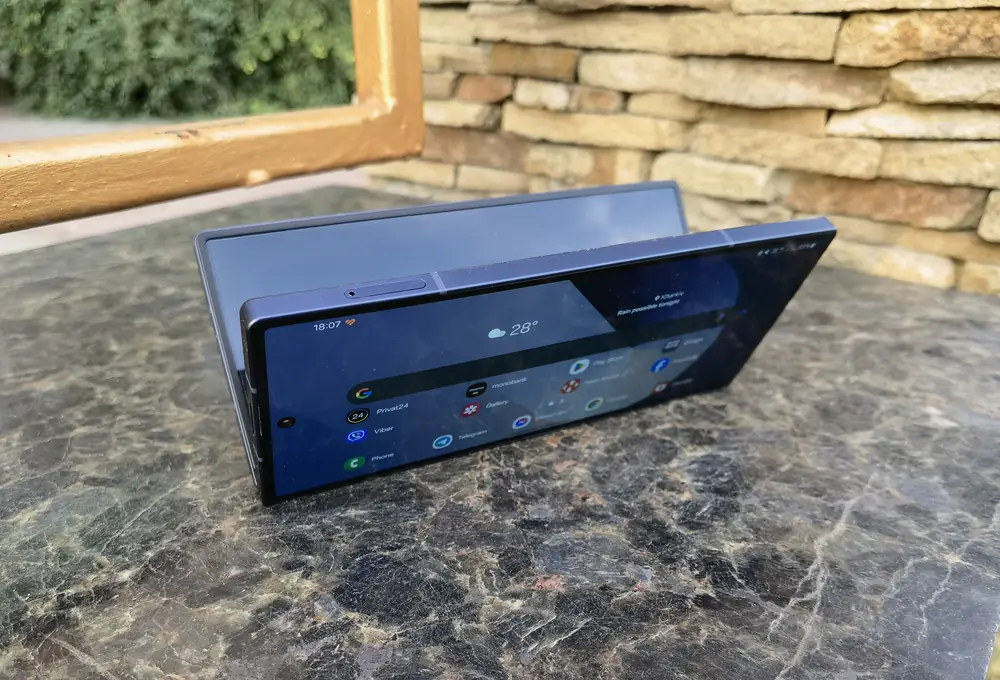
The hinges appear to be sturdier in construction. There are no signs that the smartphone will fall apart after a few thousand folding cycles. Much of this can be attributed to the quality hinge, which seems built to last a long time (though I understand that this is a relative concept).
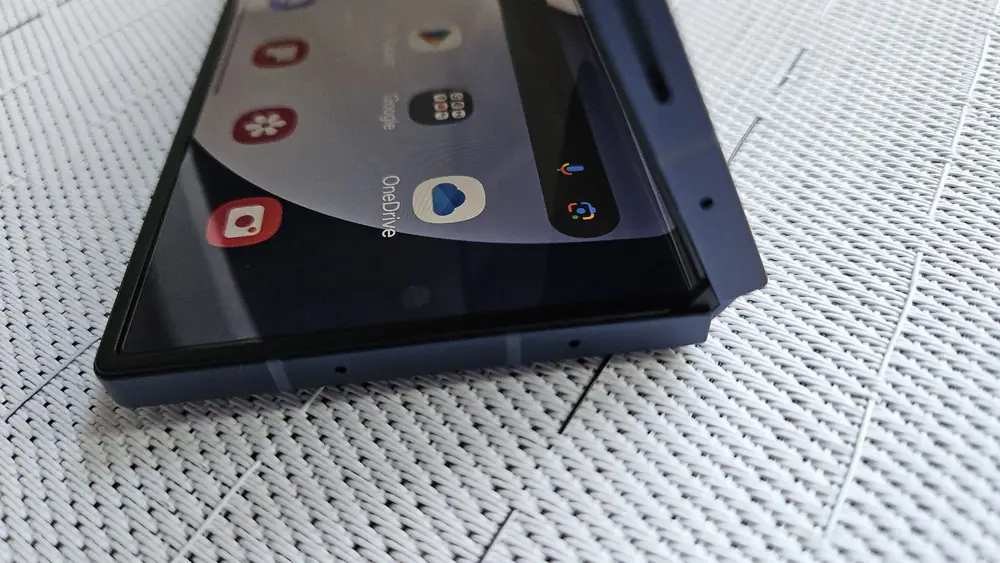
I have more concerns about the inner screen and the protective film covering it. I spent a lot of time with the Galaxy Fold5, and I can say that the film is quite sensitive to temperature fluctuations. During extreme cold, it began to peel off. While this didn’t significantly affect the phone’s functionality, over time, it did create additional noise when opening and closing the device. Sure, you can replace the film to make it look brand new again, but will this issue arise again? I don’t have an answer to that question.
Read also: All about Samsung Galaxy S24, Galaxy S24+ and Galaxy S24 Ultra: Report from presentation
The placement of the controls on the Galaxy Fold6 easily adapts to both the open and closed states. You won’t be searching for them every time, and ideally, you shouldn’t have any issues even when operating it by feel. The Galaxy Fold6 excels in this regard. Yes, in the open position, it can be a bit tricky to adjust the volume or use the fingerprint scanner, which is integrated into the power button, but over time, it will become second nature for many users. I had no problems by the second day of use.

By the way, the volume buttons and power button are still located on the right edge of the smartphone. They are positioned at a comfortable height and are tactilely distinct. The power button, which houses the fingerprint scanner, is slightly recessed into the body, making it more convenient to use. You definitely won’t have any complaints about the fingerprint scanner; it works almost instantly and without any hiccups.
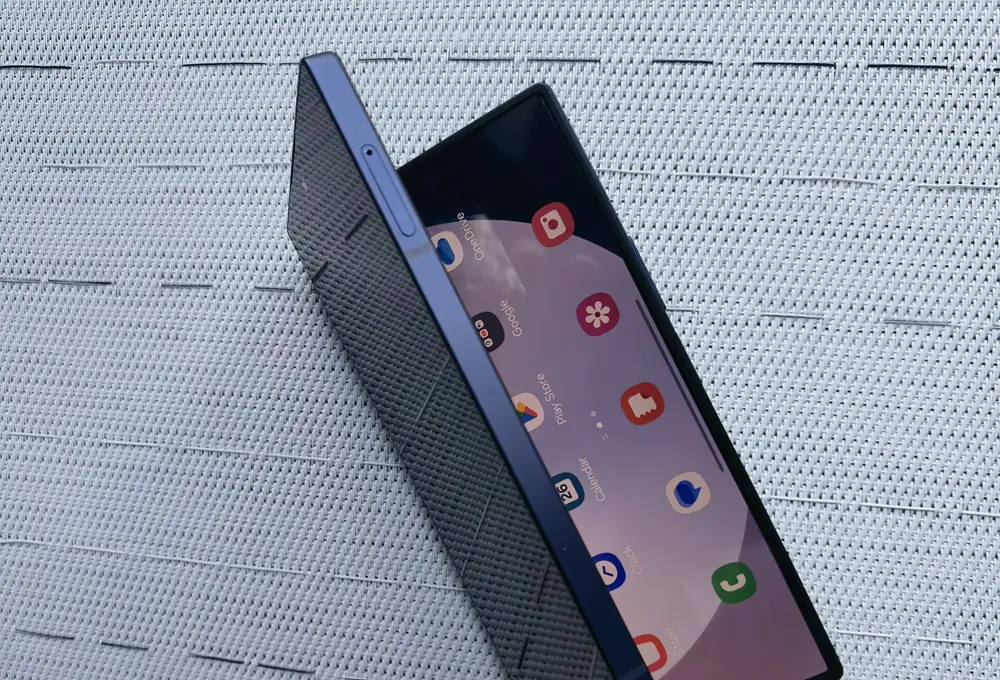
On the left edge of the aluminum frame, there is a slot for two nanoSIM cards. There is no support for microSD cards, which could have been useful, considering that the eSIM feature is available. But it is what it is.

On the bottom edge, the developers placed a USB Type-C port that can be used not only for charging the smartphone but also for connecting to a PC or laptop. Next to it, there is a cutout for the microphone and a grille for the stereo speaker.
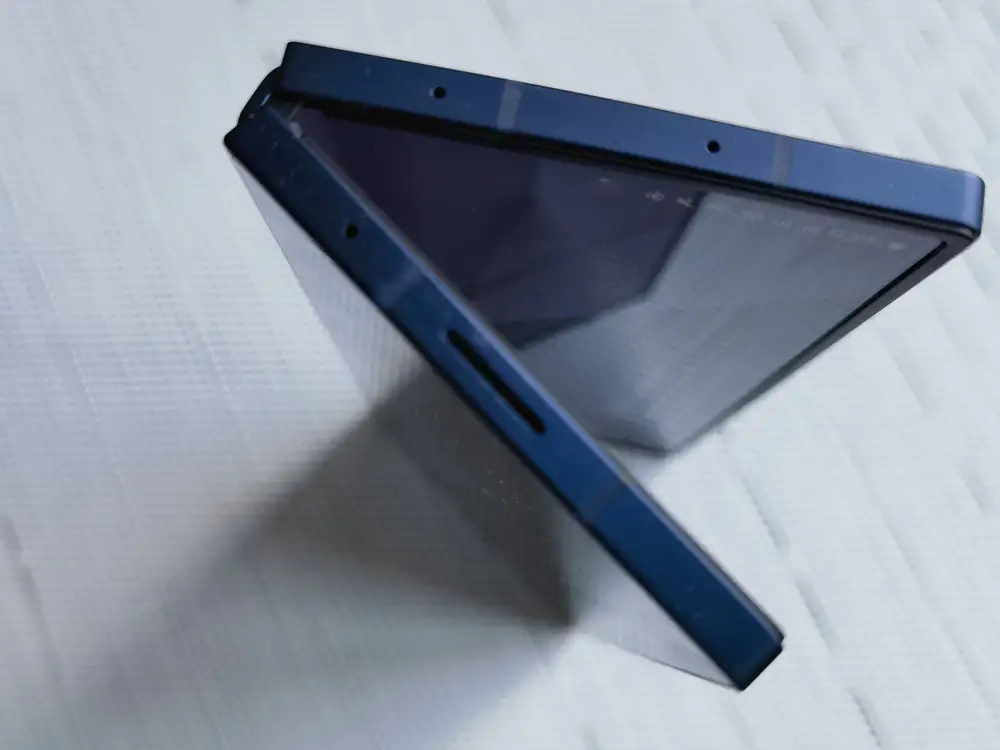
There is a grille for the stereo speaker at the top of the frame as well. Additionally, there are extra microphones for phone calls.
As you can see, it’s the standard set for a modern smartphone. Samsung’s developers haven’t introduced anything new or innovative in this regard.
Read also: Good Zoom on a Smartphone is Essential: Why I Can’t Live Without It
My expectations were not met
Before we continue, let me vent a little. Honestly, from this year’s Fold, I primarily expected two things: an integrated S Pen and altered proportions for the outer display.
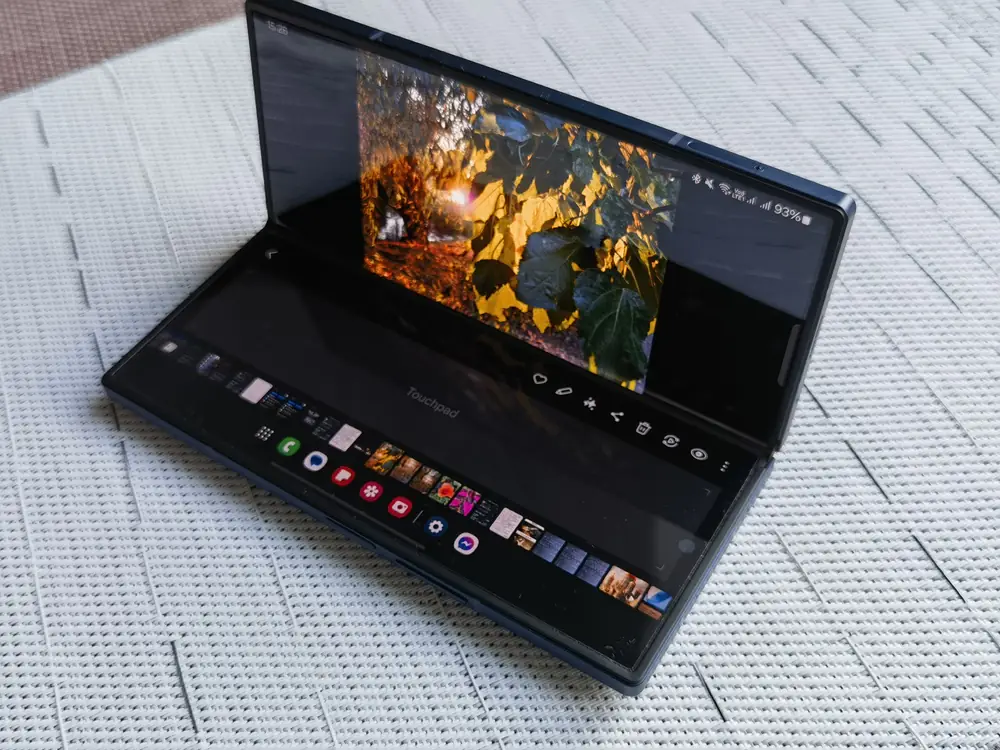
First of all, I never found it comfortable to use the outer display in previous versions. The same goes for the Galaxy Fold6, which is still long and narrow. Yes, the outer screen seems to have grown by an inch, but it’s not always easy to use. You can’t always unfold the smartphone, for instance, while walking down the street, in a car, or even at a desk. And keeping it unfolded is also impractical. It’s quite a dilemma. Competitors have already shown that something can be done about this issue, but Samsung stubbornly sticks to its guns and doesn’t seem to listen to the feedback.
Now, let’s talk about the built-in S Pen. It’s quite surprising because we’re dealing with a smartphone that costs over $1500, yet we have to purchase the case and the stylus separately. The case is understandable since the company wants to profit from accessories, but the stylus could easily be integrated into the body, like it is with the Galaxy S24 Ultra. Moreover, there’s enough space in the frame to address this issue. For some reason, this matter remains unaddressed.
Read also: Samsung Galaxy Z Fold 6A might launch as a more affordable foldable device
The screens in Galaxy Fold6 are not only bigger, but also brighter
I’ll start my discussion about the displays with the exterior one. There’s nothing revolutionary in the new Galaxy Fold6. I just want to point out that the external screen has increased by 0.1 inches compared to its predecessor. It may not seem like much, but it’s a slight improvement. Now, the Samsung Galaxy Fold6 features a 6.3-inch Dynamic AMOLED 2X panel with a resolution of 2376×968 pixels. The refresh rate is adaptive, ranging from 1 to 120 Hz, and the maximum brightness reaches 2600 nits.
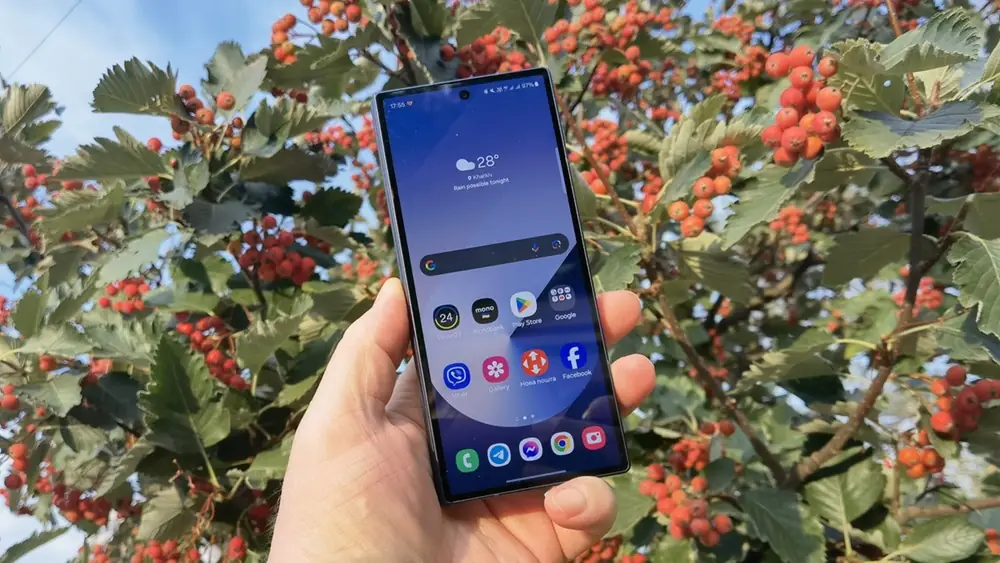
Yes, while the external screen has become slightly wider than in previous models, its rather unconventional narrow proportions remain unchanged. For some, this might be an advantage, as it’s quite comfortable to hold in the hand when folded. These dimensions somewhat facilitate use and improve grip.

However, this design does come with its issues. The elongated shape makes it a bit harder to reach the top of the screen, and the interface and apps often appear unnaturally narrow. This is especially noticeable in certain applications and when using the keyboard.
Having extensive experience with previous versions of the Galaxy Fold, I adapted fairly quickly. Still, I would prefer if Samsung used external display proportions closer to standard ones. This would allow for a more natural use in the folded state.
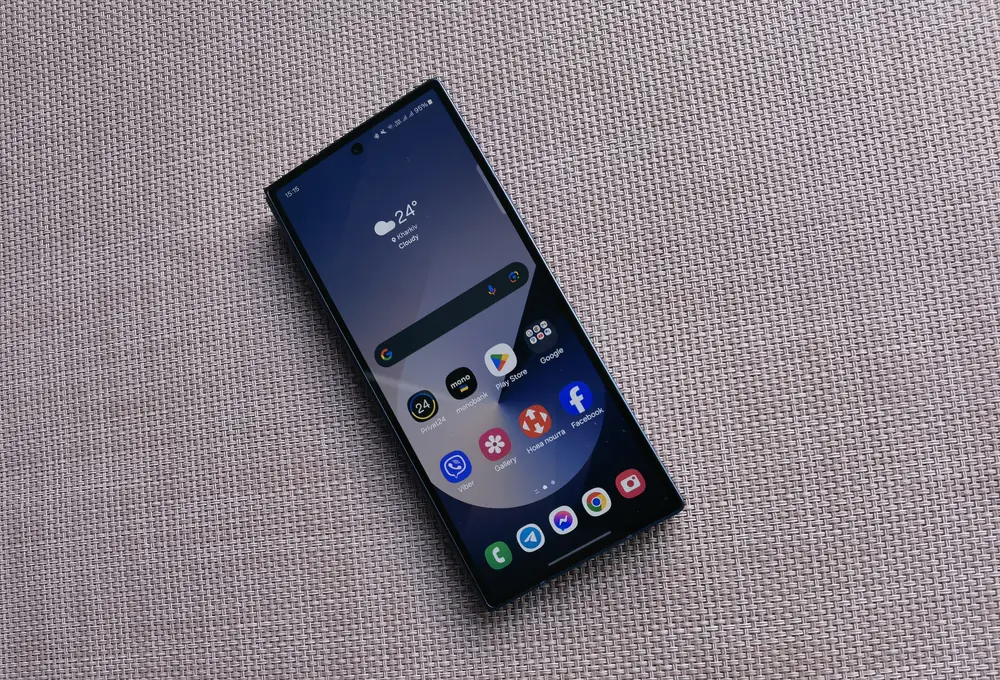
However, all the issues with proportions and comfort fade away when you interact with the display, which is simply of very high quality. The AMOLED panel performs exceptionally well. The colors are vibrant and rich, and the viewing angles are satisfactory, with only slight dimming. The adaptive refresh rate works flawlessly. The maximum brightness is also a significant advantage for Samsung. The display allows for easy use of the smartphone in bright sunlight, while the minimum brightness is gentle on the eyes at night.
Both screens support Always On Display, although their functionalities differ significantly. When folded, the external screen allows you to set a lock screen background, while the internal screen simply displays a black background. However, I doubt you’ll often leave the smartphone open for extended periods.
 The standout feature of the Samsung Galaxy Fold6 is its internal display. When unfolded, it boasts a 7.6-inch Dynamic AMOLED 2X panel with a resolution of 2160×1856 pixels. This internal display also features an adaptive refresh rate ranging from 1 to 120 Hz, with a peak brightness of 2600 nits, just like the external screen.
The standout feature of the Samsung Galaxy Fold6 is its internal display. When unfolded, it boasts a 7.6-inch Dynamic AMOLED 2X panel with a resolution of 2160×1856 pixels. This internal display also features an adaptive refresh rate ranging from 1 to 120 Hz, with a peak brightness of 2600 nits, just like the external screen.
Honestly, we are dealing with an outstanding screen in almost every regard—quality display, vibrant colors, both minimum and maximum brightness levels, and top-tier resolution. I thoroughly enjoyed working on the internal screen. It truly enhances the experience of browsing web pages or watching movies. Reviewing photos and videos taken with the Samsung folding smartphone is particularly enjoyable on this display. Additionally, the incredible convenience of multitasking with two applications simultaneously stands out; in this aspect, the Korean company has outpaced its competitors.
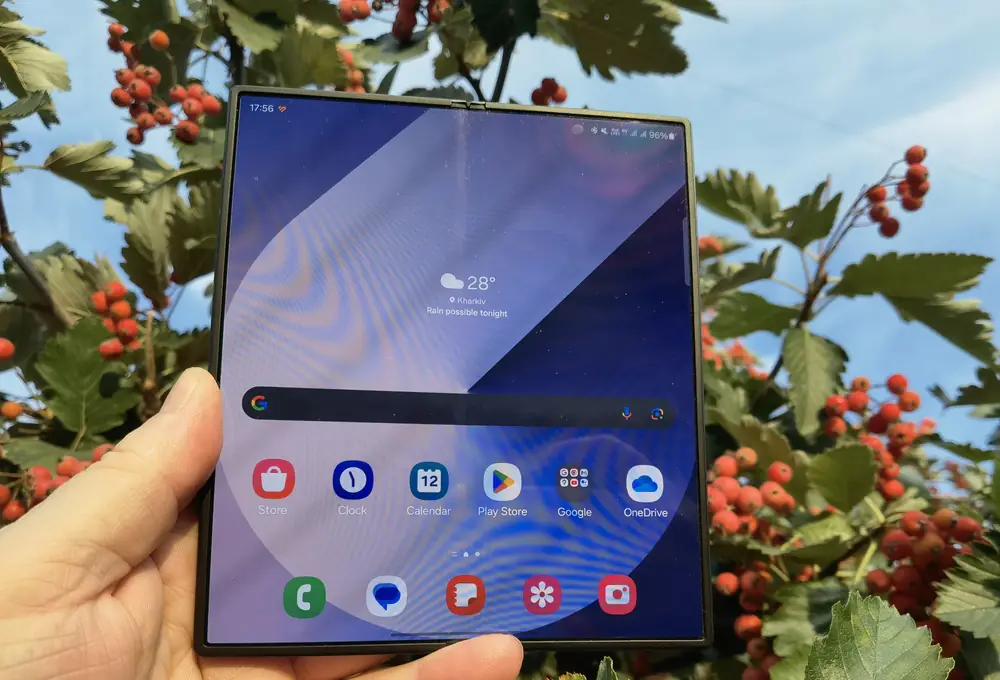
Now, regarding a crucial aspect worth noting for those encountering the Galaxy Fold series for the first time: just like in previous years and with nearly every folding device, the internal screen is covered with an additional protective film that should not be removed on your own. This is important because removing it could damage the screen. If it starts to peel off (which can happen over time or due to temperature fluctuations), you must go to an authorized service center, where they will replace the film with a new one.
Another point to mention is that the protective film on the screen easily attracts smudges and fingerprints, noticeable within just a few minutes of use. This can indeed be frustrating, as you’ll find yourself needing to wipe the screen constantly. Additionally, dust can also get inside when the device is folded.
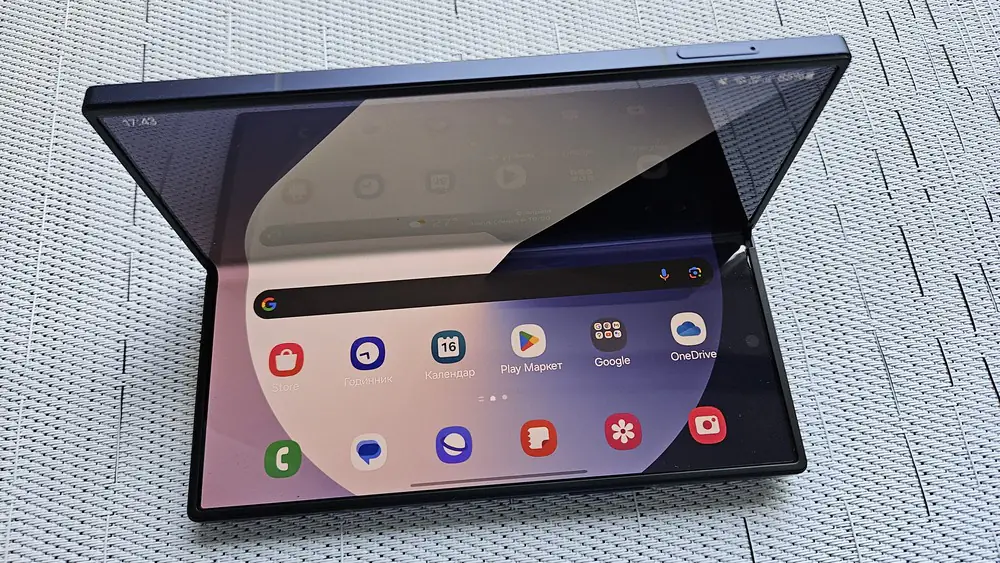 Under the folding display is a 4-megapixel selfie camera. It’s still quite noticeable due to the pixel grid being sparse in that area, but you can quickly get used to it. The second selfie camera, a 10-megapixel unit, is located above the external screen.
Under the folding display is a 4-megapixel selfie camera. It’s still quite noticeable due to the pixel grid being sparse in that area, but you can quickly get used to it. The second selfie camera, a 10-megapixel unit, is located above the external screen.
The Samsung Galaxy Fold 6 supports the S Pen on its folding display. Similar to the Galaxy Fold 5, it can only be used with the S Pen specifically designed for foldable devices—such as the one integrated into a special case or the S Pen Fold Edition. I haven’t had the chance to use it myself, so I’ll leave it at that.
Read also: Motorola Edge 50 Fusion Review: Beautiful and Successful
Are both screens easy to use?
I specifically highlighted this in a separate section because there’s something important to discuss. Many of my colleagues say that this format of a foldable smartphone is not entirely convenient. Perhaps that’s true if you don’t fully utilize its capabilities.
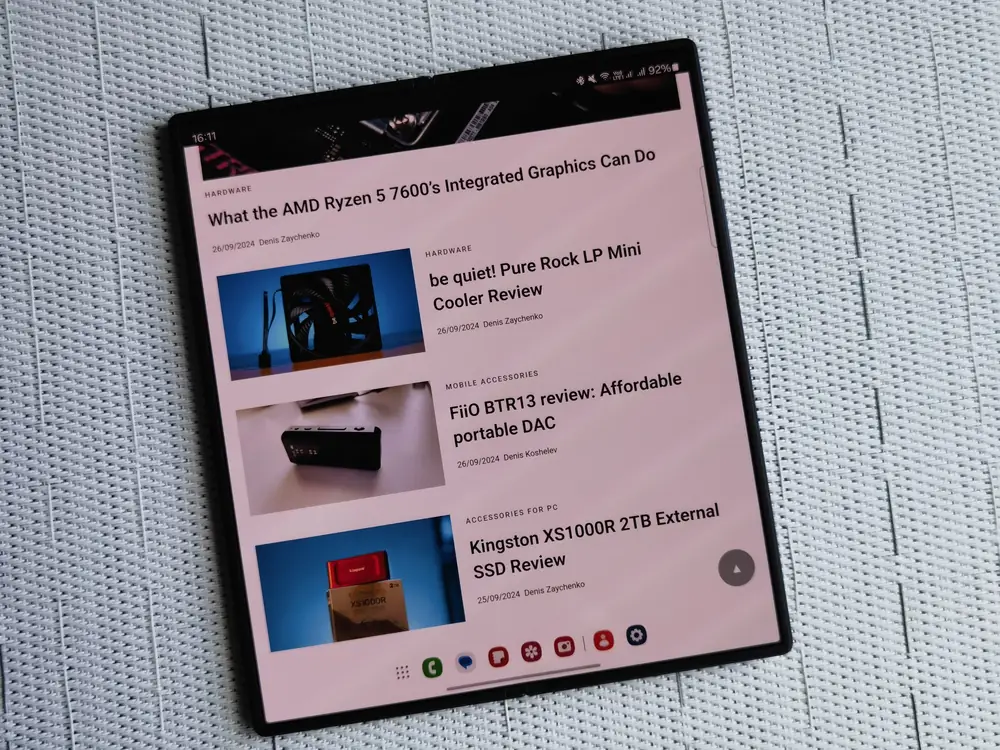
For me, the Galaxy Fold series is almost the perfect modern smartphone. If you want to instantly respond to a call or message, the external display is there for that. It essentially functions like a regular smartphone, albeit somewhat elongated. It’s convenient and comfortable to work on, but I need more.
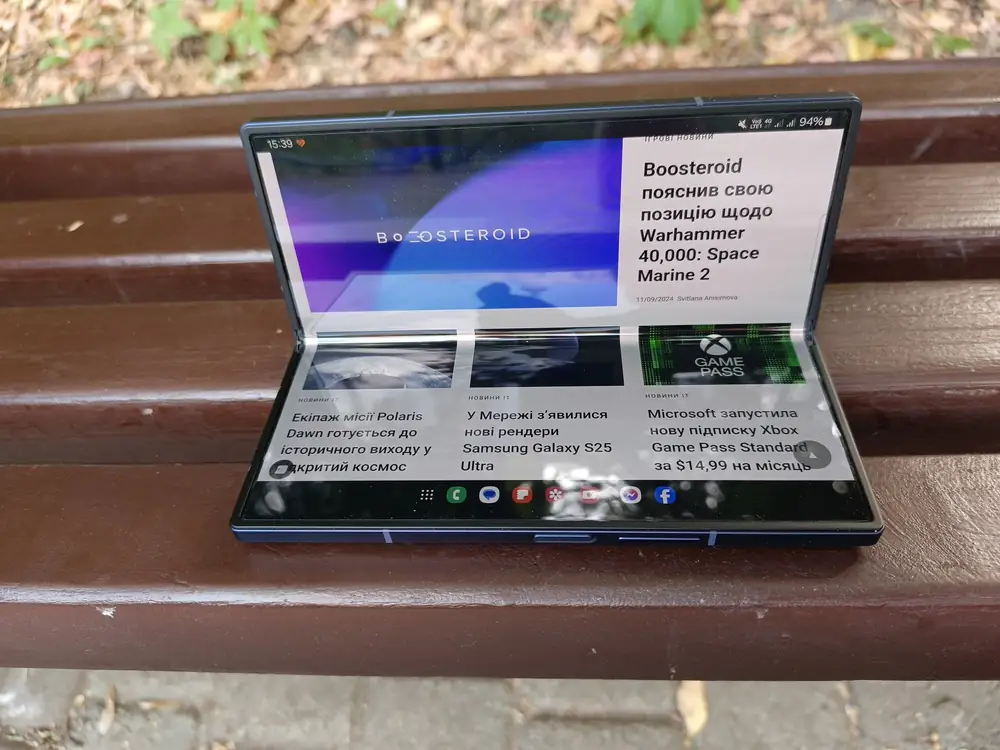
That’s exactly why the Samsung Galaxy Fold6 features an incredible 7.6-inch internal display. With just a quick motion, your smartphone effortlessly transforms into a tablet. It’s incredibly convenient. For instance, I’ve become so accustomed to watching videos on the unfolded Fold6 that using a traditional smartphone now feels almost outdated—like switching back to a feature phone after using a smartphone.
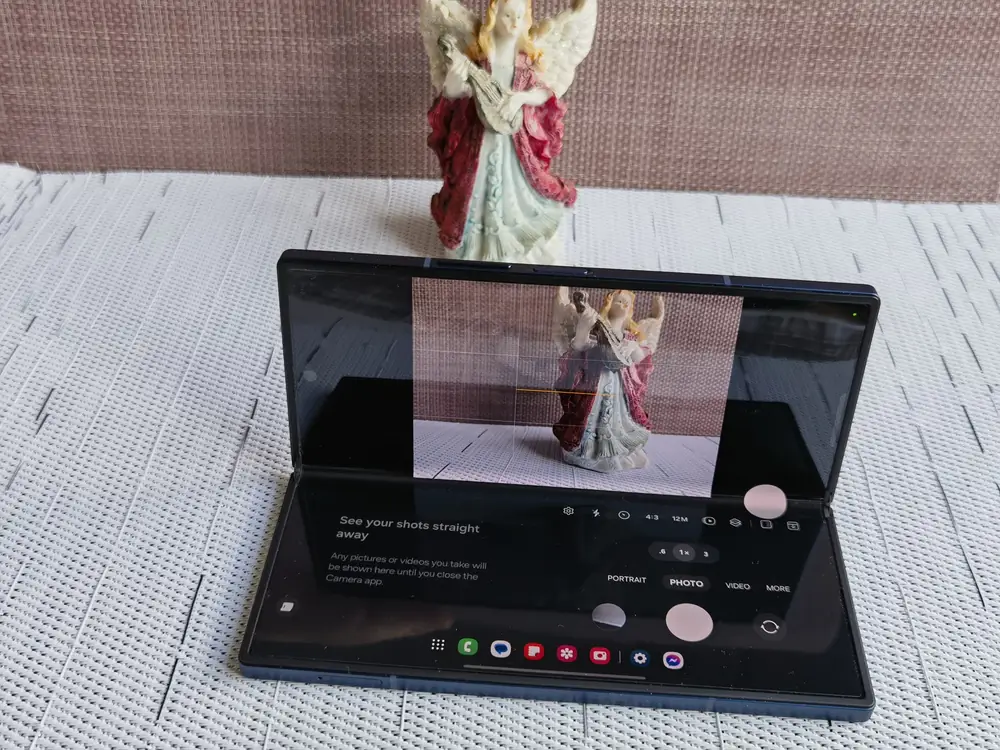
Moreover, this incredible AMOLED display excels at its tasks. It’s perfect for watching videos and engaging on social media. However, its real strength lies in reading. Browsing websites or reading books becomes a completely different experience, making the Fold seem ideal for such activities. If you need a smartphone for work, like responding to emails, you just need to get used to typing with both hands, which is actually more convenient in the long run. Additionally, all apps and games that can adapt to the screen proportions look fantastic. Here, the Fold has a decisive advantage over traditional mobile devices.
Read also: Motorola Razr 50 Review: IPX8 Rating and Huge External Display
Sound: true stereo
Audio presentation isn’t an area where we’ll see significant progress in mobile phones. This also applies to the Samsung Galaxy Fold 6, which has the same sound quality as last year’s model.
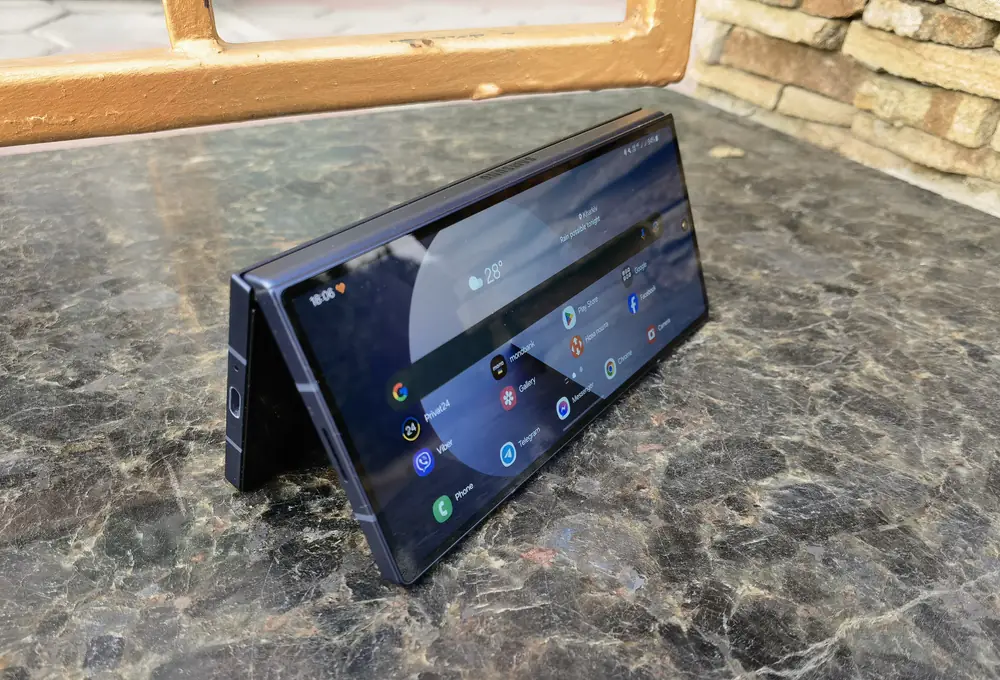
The stereo speakers are located at the bottom and top of the phone, so when you open and rotate the device in landscape mode, the outputs are positioned on the left and right, creating a pleasant stereo effect. The sound has a strong bass but is not overly emphasized. The smartphone delivers good sound quality without distortion, even at high volumes, although it struggles a bit at maximum volume. Calls can also be handled in the open position, but only through the speakerphone.
High performance
The Samsung Galaxy Fold6 is a cutting-edge, innovative mobile device. It’s no surprise that it features the Snapdragon 8 Gen 3 for Galaxy processor. This is paired with 12 GB of LPDDR5 RAM and, in the base configuration, 256 GB of UFS 4.0 storage. Potential buyers also have the option of 512 GB and 1 TB of storage space. So, we’re looking at top-of-the-line specifications, and everything works seamlessly during use.
From a performance standpoint, the new Galaxy Fold6 is hard to criticize. The Qualcomm Snapdragon 8 Gen 3 is one of the most advanced processors available today. Samsung has fully harnessed the capabilities of this modern chip. In practice, this means that whether you’re using everyday applications, browsing the web, or handling more demanding tasks and multitasking with split-screen functionality, the performance is consistently impressive.
In other words, in nearly a month of use, I haven’t encountered a single situation where the Samsung Galaxy Fold6 disappointed me in terms of performance. This also applies to benchmark tests, the results of which certainly meet expectations.
A few words about the overall usage experience with the Samsung Galaxy Fold6. I’m sure many are curious whether it heats up during intense sessions. Generally, while browsing websites, using social media, and watching videos, the Galaxy Fold6 feels at most warm or slightly warm. However, this doesn’t mean it’s always perfect.
The situation changes somewhat when we start using two or three apps on the split screen, as well as when watching videos in a small window or playing games. In these cases, the Galaxy Fold6 becomes noticeably warm. This also applies to the video recording process. I wouldn’t say it’s critical heating, but you’ll definitely feel it in your hands, especially on hot days. However, the cooling system does its job, and the smartphone doesn’t start to lag or behave oddly.
The Samsung Galaxy Fold6 is equipped with essential connectivity modules, including tri-band WiFi 6e, 5G networks in the sub-6 GHz range, Bluetooth 5.3, NFC, GPS, and UWB.
Regarding other features, the smartphone supports dual SIM cards, which can be configured with two physical nanoSIMs or virtual eSIMs, as those are also supported. You can make phone calls via VoWiFi and VoLTE, provided your carrier supports these features.
System, software
Out of the box, the Samsung Galaxy Fold6 runs on the company’s One UI 6.1.1, which is based on Android 14. This interface is specifically adapted for foldable smartphones. I mention this because there are several features designed exclusively for foldable devices, and each one is quite useful in its own way.
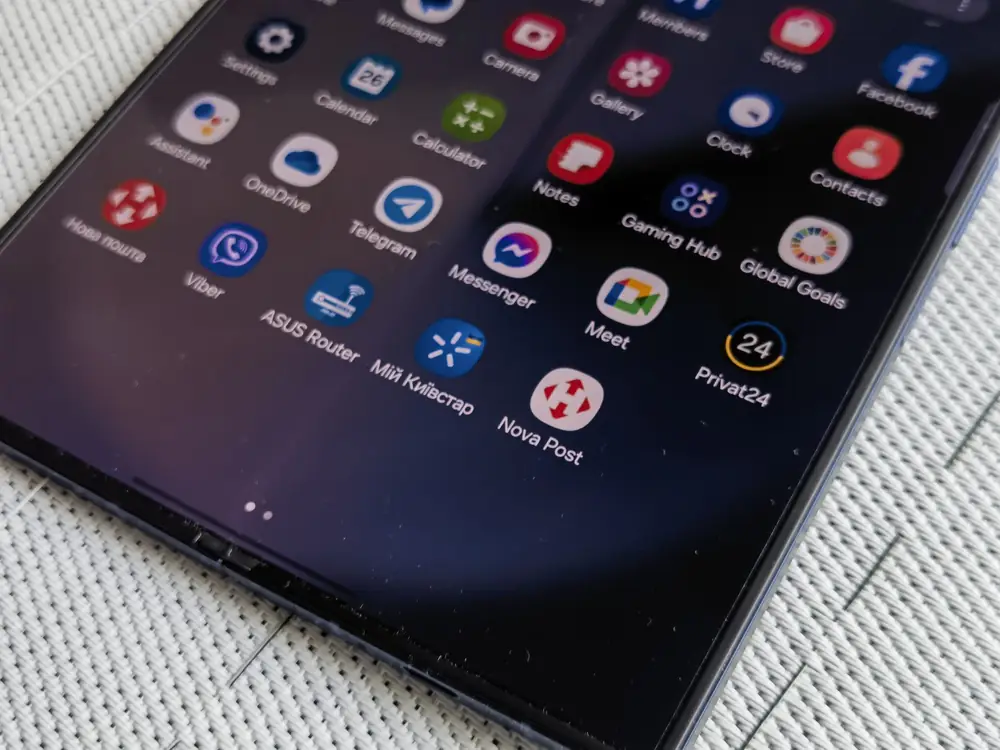
While most of the interface remains the same as in many Samsung smartphones, the appearance of the One UI is not significantly different from what we’ve seen in the Galaxy S24. However, as I mentioned earlier, there are some interesting features available exclusively for the Galaxy Fold series.
First and foremost, you’ll definitely appreciate the smooth transition between screens. If you have an app open on the external display and want to continue using it on the internal one, all you need to do is unfold the smartphone. The app automatically adapts to the larger screen, ensuring a comfortable viewing experience. The reverse action works just as seamlessly.
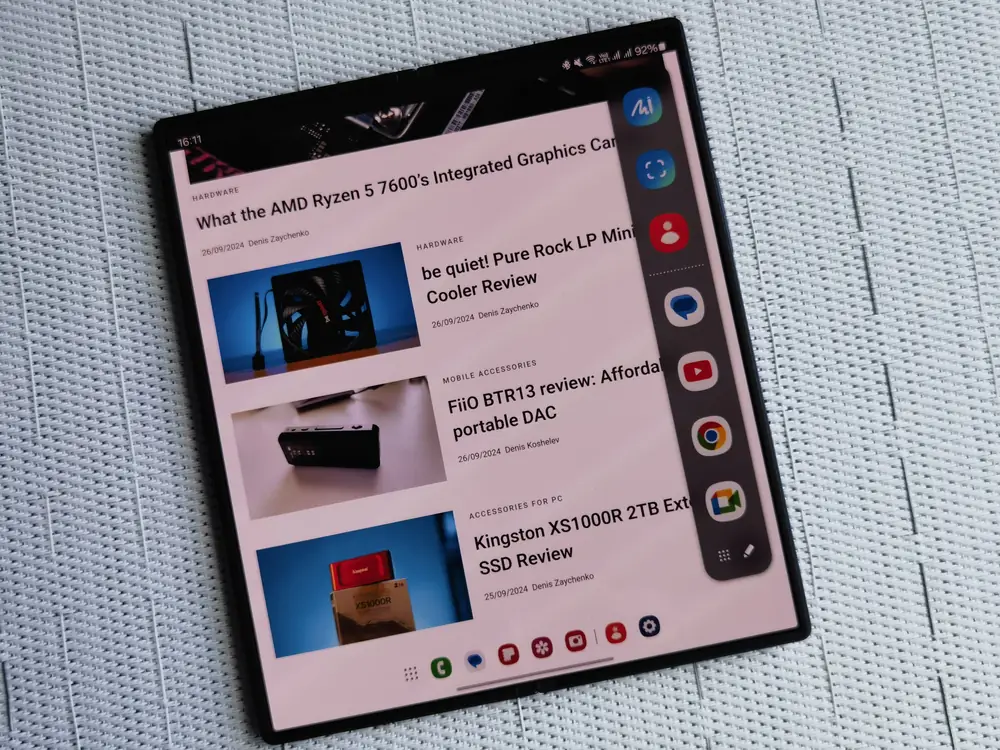
However, I did encounter some issues from time to time. Much of it depends on the specific app—whether it has been adapted for this purpose. There are still some apps that display messages indicating that the program needs to be restarted in order to scale to the size of the second screen. This can be frustrating at times, although the number of such apps is decreasing.
It’s also worth mentioning the taskbar located at the bottom when you’re working on the internal display. It somewhat resembles a similar feature in Windows. It includes access to the app menu, icons for apps displayed at the bottom of the main screen, and icons for two, three, or four recently opened apps. The taskbar also allows for quick access to apps from there instead of going back to the home screen, making it significantly easier to switch between multiple apps simultaneously.
Everything is very simple and convenient. Just hold down the icon on the taskbar (or in the left menu) and drag it to the left, right, top, or bottom half of the display to open a specific app in split-screen mode. When you release the icon in the center of the screen, the app will open as a floating window. This is a handy solution that significantly enhances multitasking on the Fold.
I also really enjoy working with the smartphone in a folded position. This is useful when you’re typing text on the device or watching videos, as it opens up additional settings for apps or the keyboard.
Overall, using the Galaxy Fold6 sometimes makes me feel like I’m sitting at a desktop computer. I even wrote some reviews on it. It’s convenient and comfortable. Not to mention the Samsung DeX feature, which transforms your smartphone into a desktop PC.
Samsung has managed to create a truly excellent and intuitive interface with One UI 6.1.1. While it may not visually introduce anything particularly new, the smoothness of app transitions, the incredible speed of the smartphone, and now the addition of Samsung AI all add a unique charm to the experience.
Improved Samsung AI
During the presentation of the Galaxy Fold6 and Galaxy Flip 6, the Korean company promoted the new devices under the slogan “Galaxy AI is here.” Yes, AI is present in the new devices, but there isn’t much truly new here. We’ve seen all of this in the Galaxy S24 series models. All these AI features—like Circle to Search, summarizing and translating web pages, transcribing voice notes into text, editing photos and removing elements from them, and phone call translation—are also available on the Galaxy Fold6. We already have a detailed review of these features on our site, so I won’t focus on them here. For those interested, feel free to read it here.
I want to focus on the truly new features. What I liked most was the “From Sketch to Painting” function, which allows artificial intelligence to transform your doodles into interesting images, sometimes resembling well-crafted graphics.
Interestingly, you can create such an image practically from scratch. It’s quite simple. You just pull this feature from the side toolbar and draw what you want in the designated area of the screen. Then, you need to choose what style it will be: drawing, watercolor, sketch, pop art, or 3D cartoon-style graphics. After that, you click “Create,” and within a few seconds, you receive four different versions of the image. You can do the same with photos you’ve taken. While some may see it as just a fun gimmick, this feature certainly brings a sense of originality.
Many will also appreciate another new feature of Galaxy AI — Portrait Studio. By enabling it, you can transform a photo of a person or your own selfie into graphics in one of four styles: comic, 3D cartoon, watercolor, or sketch.
Did the Galaxy AI features impress me? In the first few days, it was somewhat exciting — you try things out, experiment, but eventually, you just stop using them. Most often, I used the voice note transcription function to text. It’s convenient to dictate a note and get the text right away. I even tried recording my thoughts for this review and converting them into text. Honestly, I’m a bit tired of the AI hype. There’s too much of it, too much talk, and not enough practical usefulness.
Read also: Samsung One UI 6.1 Interface and Galaxy AI Features Review
Battery life
The Samsung Galaxy Fold6 is equipped with a 4,400 mAh battery that can be charged via a wired connection with a power output of 25W. It also supports wireless charging at 15W and reverse wireless charging at 4.5W.
The 4,400 mAh battery has been a standard in the Galaxy Fold lineup for several years, and it seems the manufacturer has not made any significant changes to it. While it’s clear that this capacity doesn’t guarantee extended battery life, the real-world performance is not as poor as one might expect. The combination of a modern SoC (System on Chip) and LTPO (Low-Temperature Polycrystalline Oxide) displays contributes to more efficient power management, allowing the device to perform reasonably well throughout the day.
Thanks to the improved efficiency of the processor, the battery life of the Galaxy Fold6 is somewhat better, but in demanding scenarios, it still behaves like a classic one-day smartphone. In my experience, the Galaxy Fold6 has been able to last through at least one intensive day of use, typically from morning to evening, and sometimes even around a day and a half.
Overall, I find the results to be good, but they don’t elicit a “wow” factor.
Our endurance tests show approximately 22 hours of video playback on the internal display and 25 hours on the external display. The difference in battery life when using the internal display is relatively small, which is great news for users looking to maximize their usage.
Read also: What is MIL-STD 810H: Standard Characteristics, Testing, and Usage
Classic cameras
This is exactly how we can describe the camera setup of the Samsung Galaxy Fold 6. It gives off a sense of déjà vu, as if you’re holding the older versions of the Galaxy Fold in your hands.
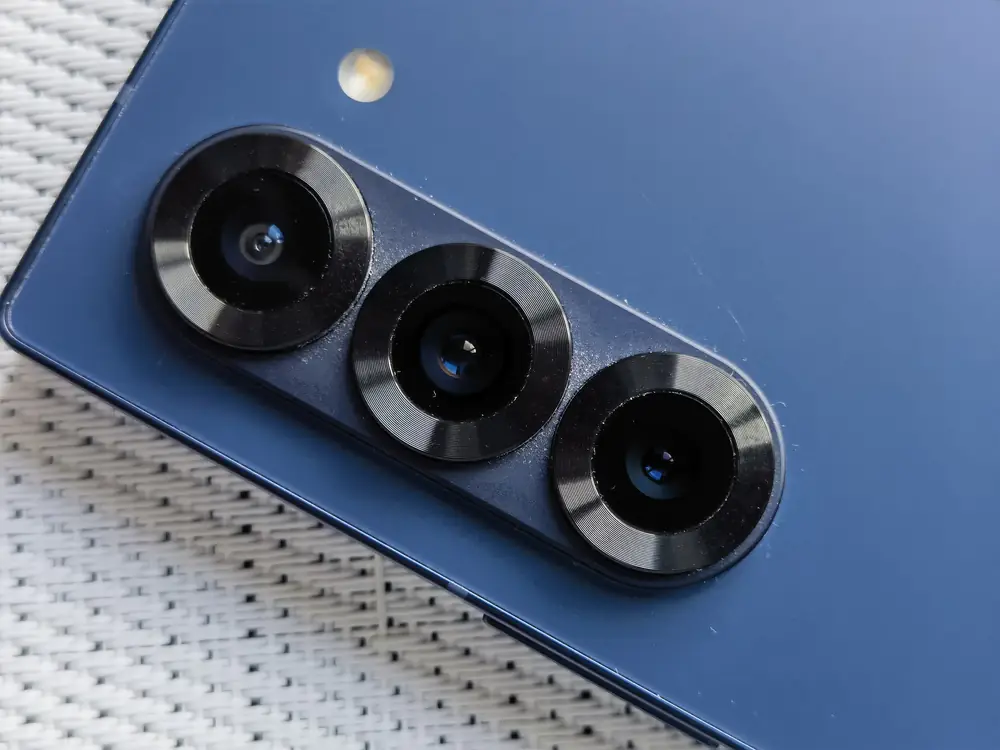
Once again, the main camera features a 50-megapixel sensor with an f/1.8 aperture, equipped with PDAF and OIS. Additionally, users get a 10-megapixel telephoto lens with lossless optical zoom up to 3.0x, as well as a 12-megapixel f/2.2 ultra-wide lens. Furthermore, there are two additional cameras for selfies and video calls. One of them is a 4-megapixel camera, discreetly located just below the internal screen, while the other is a 10-megapixel camera placed in a small cutout on the external display. So, we have exactly the same setup as last year. Theoretically, I could just link to last year’s Fold 5 review, but I decided not to rely on the manufacturer and check the camera capabilities myself.
The photos are… just okay. But again, with a smartphone that costs this much, we could easily expect something better—and I don’t understand why there are no Ultra cameras here. This is yet another puzzling decision from Samsung. Additionally, I have to admit that the borders while taking photos on the screen look surprisingly bad, which may partly be due to the aspect ratio of the external display.
Let’s discuss in more detail. Of course, we’ll start with the daytime photos taken with the main lens. Everything is classic here. We have a wide tonal range, very bright, vibrant colors, good detail, and quite effective HDR. There are definitely no complaints in this area. Although there were occasional minor issues with focusing on the subject, the quality of the photos taken is truly impressive.
I can also praise the ultra-wide lens. Here, you can truly appreciate the wide field of view and the high color consistency with the main and telephoto lenses. When there’s enough light, the photos look very good. There are no issues with edge blurring, which is often a problem with ultra-wide lenses. However, in terms of detail, it is noticeably lower compared to the main sensor.
It’s worth noting that the telephoto lens allows for photos with 3x optical zoom, while the maximum digital zoom value is 30x. There are no changes in this regard compared to its predecessor. Naturally, the 3x optical zoom offers truly satisfactory quality and good detail. The photos are of quite decent quality. When shooting at 10x zoom, the captured material still looks fairly appealing. Much depends on the lighting conditions, though. However, the 20x and 30x zoom definitely won’t impress you with their level of detail.
When it comes to the night mode, the cameras on the Samsung Galaxy Fold 6 handle the task quite well. You can take photos in a dedicated night mode as well as in automatic mode.
It’s worth noting that the software sometimes automatically detects low light conditions and extends the exposure, which is indicated by a moon icon in the corner of the preview. I often turned off the dedicated night mode because it excessively brightened the photos, making them look unrealistic.
Now let’s talk about the ability to take selfies. With the Galaxy Fold 6, you can capture these photos using one of three cameras. You can use the selfie camera located on the external display, or the one hidden on the internal screen when you unfold the smartphone. Additionally, you can take selfies with the main camera by enabling the selfie mode. The choice is yours. However, I personally preferred the selfies taken with the main lens after unfolding the smartphone.
Now, regarding video recording. Samsung’s flagship smartphones have been able to shoot video at a maximum resolution of 8K at 30 frames per second for quite some time, and the Galaxy Fold 6 is no exception. However, it’s worth noting that this resolution can only be enabled with the main lens.
ORIGINAL PHOTOS AND VIDEOS CAN BE VIEWED HERE
You can also record video in 4K at 60 frames per second. This can be done with all three lenses, but switching between them during recording is no longer possible. However, if you drop down to 4K at 30 fps, this feature is fully restored. So far, Samsung has been disappointing in this regard.
It’s also worth mentioning additional video options, which include recording in HDR10+ format and 360-degree audio (using a Bluetooth headset microphone).





As for the quality of the video itself, there are no complaints. The videos are of very high quality, with a wide tonal range and rich color palette. I was particularly impressed with the effective stabilization during recording, as well as the precise and very fast autofocus.
Read also: Realme 12 4G Review: Powerful Player in Its Class
Conclusions
Should you buy the Galaxy Fold 6? I don’t have a clear answer. In my opinion, the Fold 6 is the best smartphone with a flexible display. I note the significant improvement in display brightness, enhanced performance, a more pleasant and simpler design, and a thinner build. However, most importantly, it has increased water and dust resistance with an IP48 rating. Samsung surprised us by promising 7 years of system updates and enhanced the already complex One UI with additional AI features, some of which are very useful.
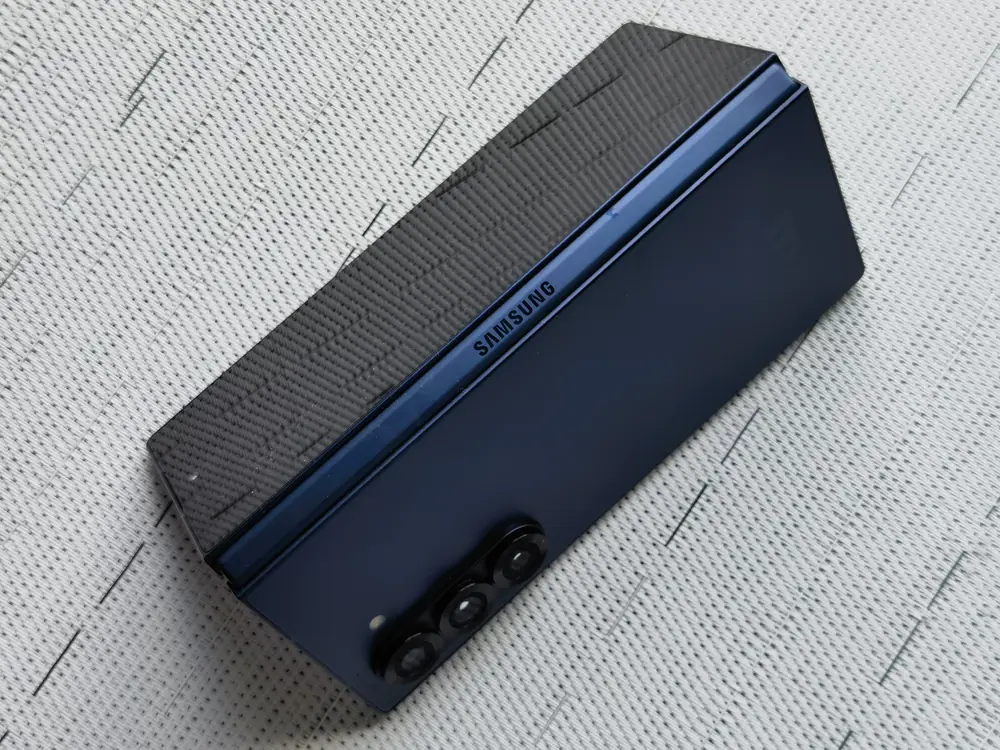
On the other hand, it’s evident that Samsung has simply skipped some enhancements between generations. The cameras remain the same (except for the ultra-wide). While they are excellent, I still expected some changes. The same goes for the charging, which definitely deserves to be faster. So, the differences compared to last year’s Galaxy Fold 5 are quite minimal. If dust resistance and a few new improvements aren’t very important to you, there’s no sense in buying the new model, as last year’s version, which is now significantly cheaper, offers nearly the same experience.
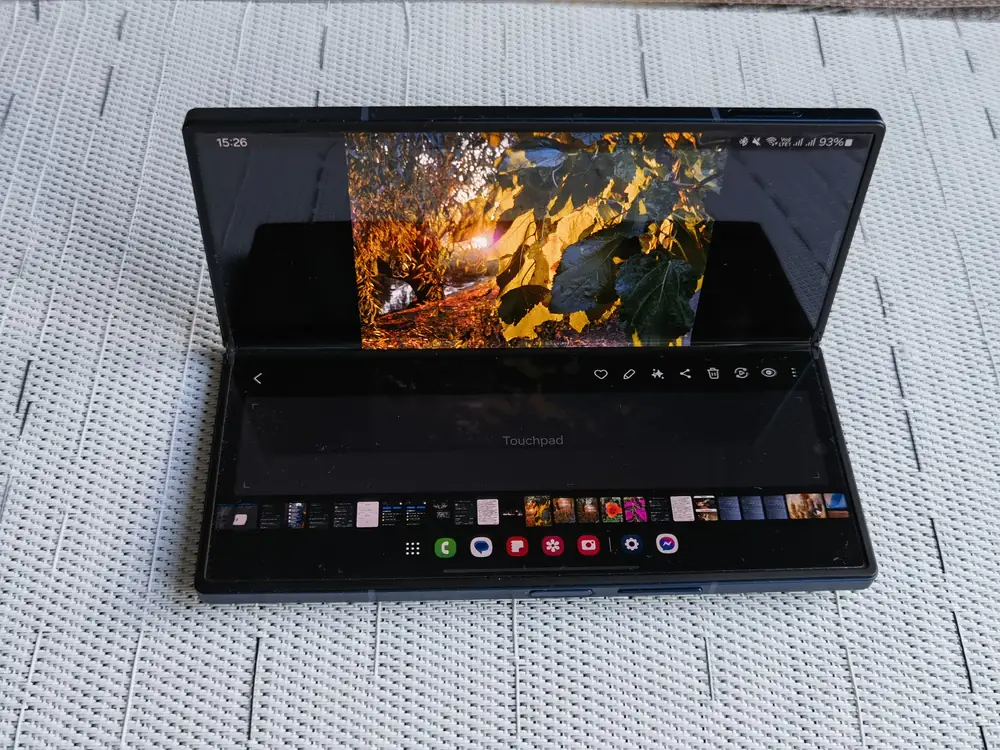
Read also:
- Samsung Galaxy Buds FE Review: Most Affordable TWS Earbuds from Company
- Realme GT3 test-drive: Need for speed
- Motorola Edge 30 Ultra Review: Can Moto Make Flagships?
- Google Pixel 7 Pro review: The machine is learning


